Here’s a seamless guide with an introductory overview, 20 distinct small living room TV ideas (each at roughly 100 words), and a concluding summary—every idea is backed by a reliable source.
Small living rooms need creative solutions to incorporate a television without overwhelming the space. From wall-mounted setups to hidden screens, these ideas blend functionality with style, maximizing floor area and storage while ensuring your TV becomes an integrated part of the décor. You’ll find solutions that range from minimalist mounting to multi-purpose furniture, clever concealment, and decorative framing. Whether you’re in a studio apartment or a compact condo, these ideas will help you create a cozy, stylish space that centers around your TV without sacrificing room to move or style to spare.
1. Wall-Mounted TV with Floating Shelves
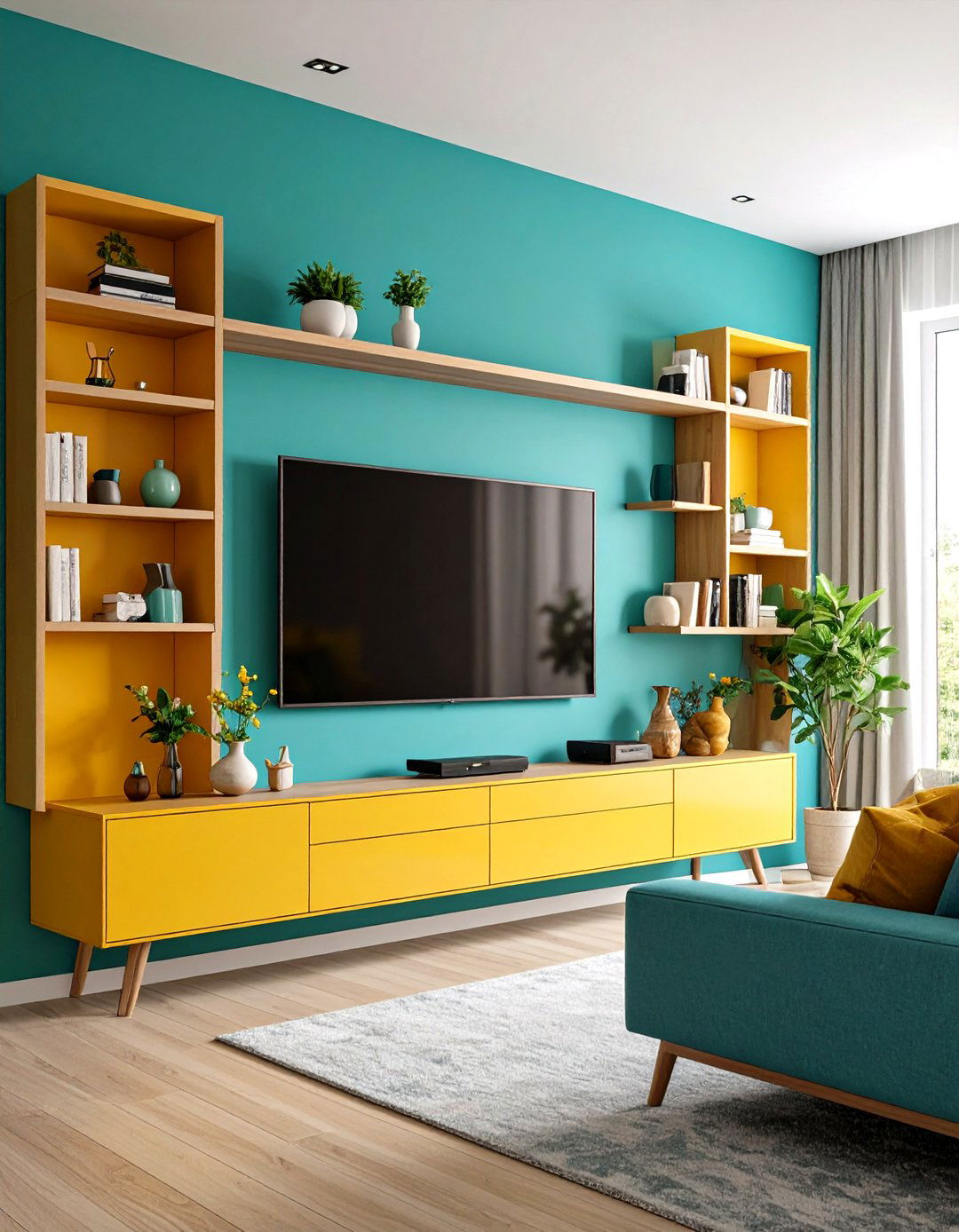
Mounting your TV on the wall instantly frees up floor space, and pairing it with floating shelves creates storage for media components and décor without bulky furniture. Floating shelves can be staggered around the screen to balance aesthetics and function, letting you display books, plants, or framed art while keeping remotes and gaming consoles within reach. This arrangement draws the eye upward, making ceilings feel higher and the room more spacious. To maintain cohesion, match shelf finishes to existing trim or accent colors for a polished, built-in look.
2. Corner TV Unit to Maximize Space

Utilizing a corner TV stand tucks your television into an often-underused nook, opening up the central living area. Corner units come in compact triangular or L-shaped designs, offering shelving or cabinets for media storage while keeping the screen at a comfortable viewing angle. This layout also allows furniture to be arranged more flexibly around the focal point, promoting easy flow and conversation zones. For a streamlined appearance, choose a unit with sliding doors or integrated cable management to conceal wires and clutter.
3. Hidden TV in a Cabinet
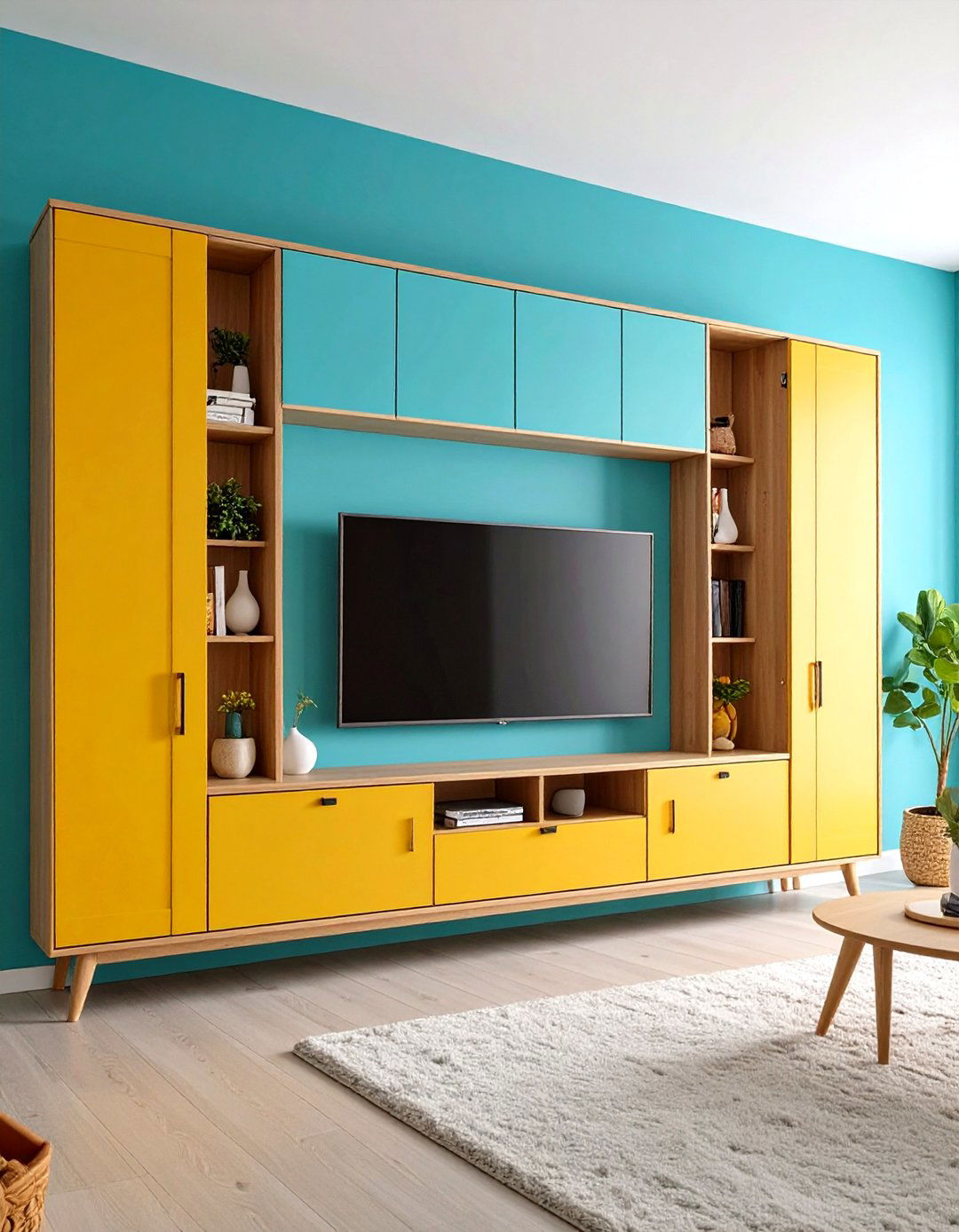
Concealing your television inside a cabinet or armoire provides a chic solution for those who want to hide tech when it’s off. Look for media cabinets with drop-down or bifold doors that open to reveal the screen and shut to become a piece of furniture. Painted or stained to match your décor, these cabinets can blend seamlessly with dressers or sideboards. This approach works especially well in multi-purpose rooms where the TV isn’t the primary focus, keeping your living area looking tidy and intentional.
4. Minimalist TV Stand with Storage
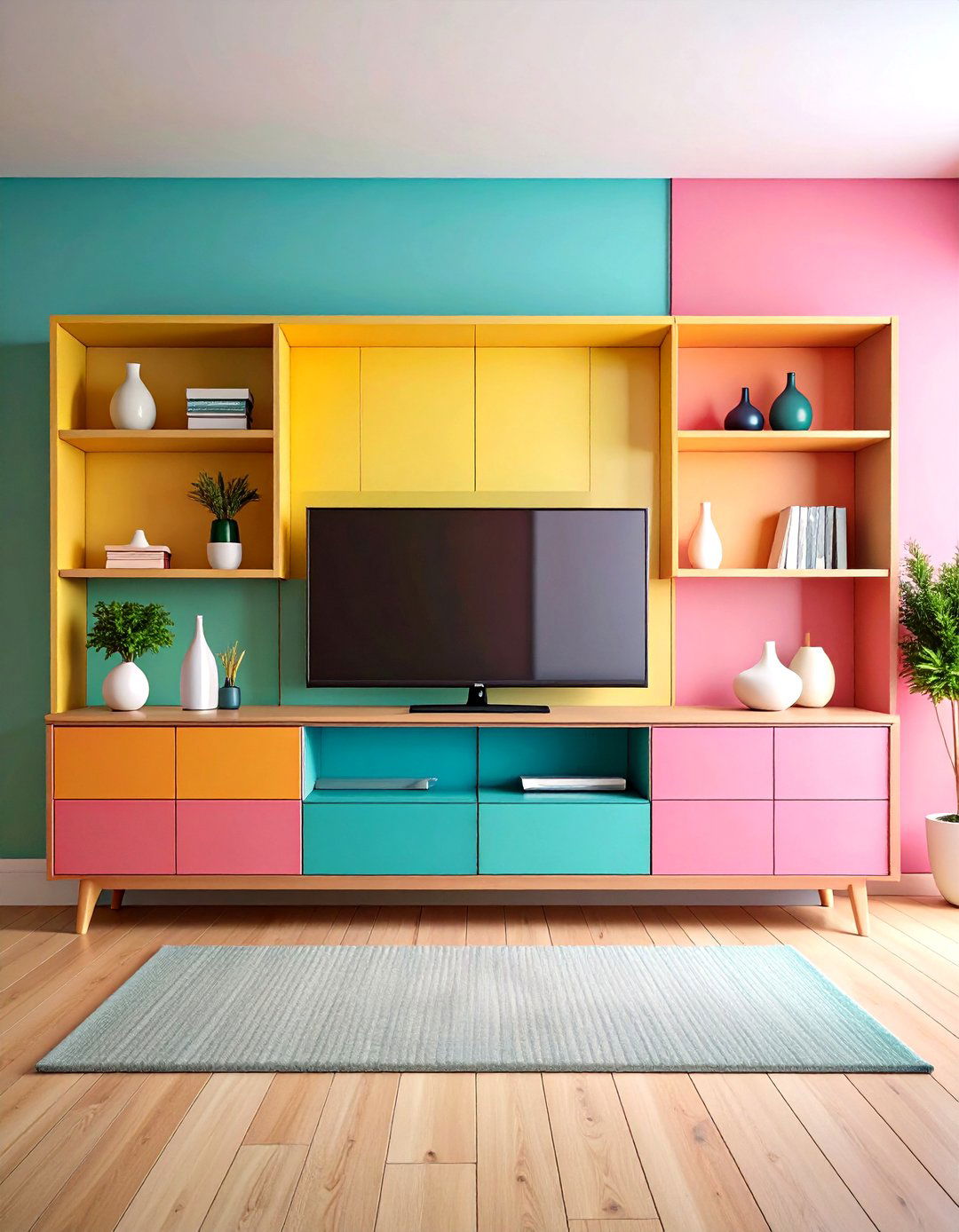
For those who prefer a simple aesthetic, a slimline TV stand with hidden storage balances form and function. Choose a piece with a narrow profile that sits just below the screen, offering drawers or cabinets for DVDs, remotes, and gaming accessories. Open shelving can be limited to one or two compartments to display a couple of decorative items without cluttering the space. A minimalist stand in neutral tones or light wood amplifies natural light and helps small rooms feel more open.
5. Built-in Shelving around TV
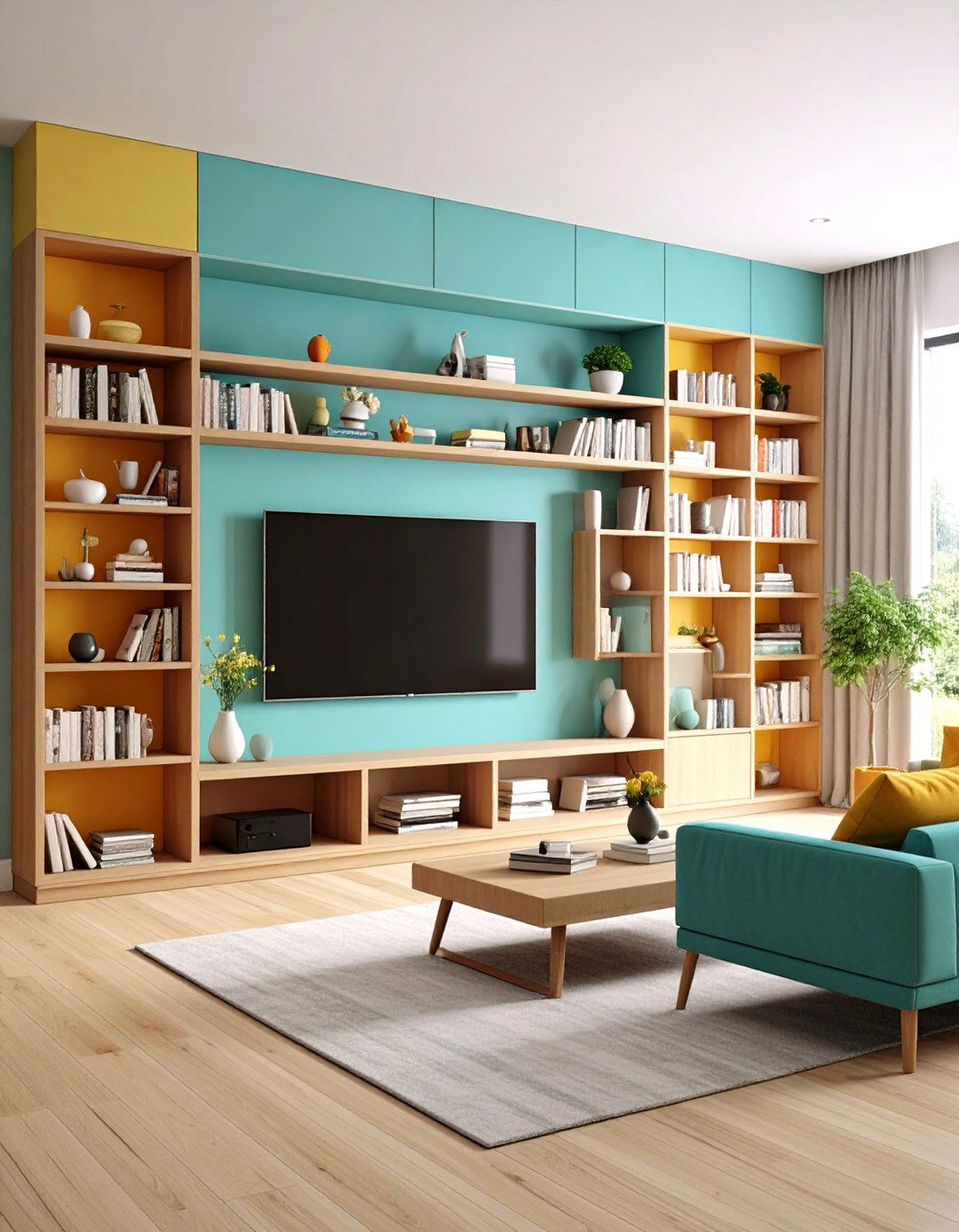
Custom built-in shelving frames your television like artwork while providing extensive storage for books, décor, and AV equipment. By extending shelves from floor to ceiling and wall to wall around the TV, you create a cohesive built-in look that utilizes every inch of vertical space. Integration of hidden cabinets beneath the screen keeps electronics out of sight, and recessed lighting can highlight books or art. This approach is ideal for apartments with enough wall depth or for homeowners open to a more permanent upgrade.
6. TV on a Swivel Mount
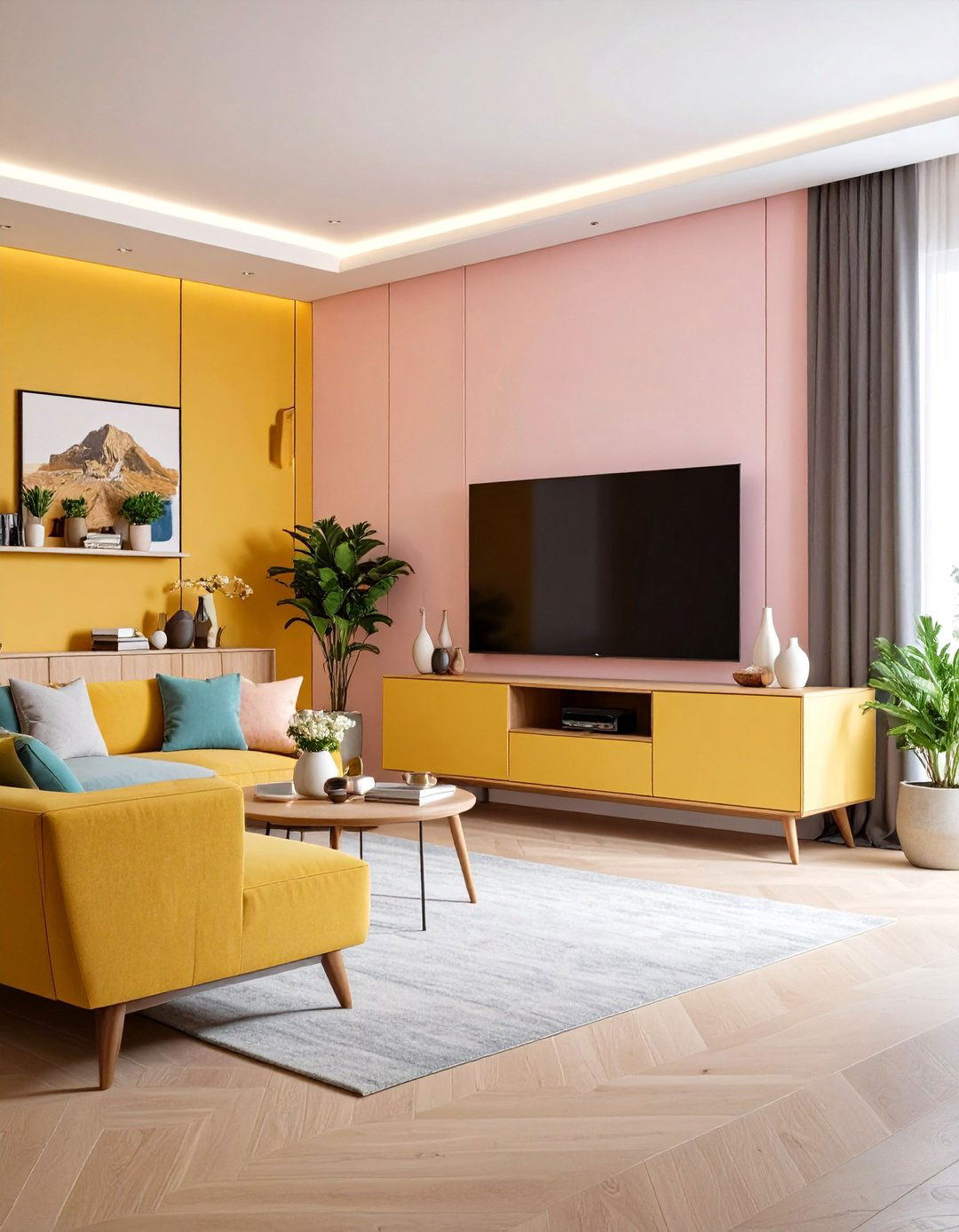
A swivel mount lets you pivot the TV to face different parts of the room, perfect for open-plan layouts or multifunctional spaces. Mounted just above a console or mantel, the adjustable arm ensures glare-free viewing from any angle. When not in use, the screen can be turned against the wall or angled to conceal cables behind furniture. Pair with a low-profile console below to house media players, creating a balanced, unobtrusive focal point that adapts to your seating arrangement.
7. Leaning Ladder Shelf and TV Combo

A leaning ladder shelf doubles as a media stand and decorative display in small spaces. Place the TV on the lower shelf, then use upper tiers for framing, plants, or books. The open back and angled design prevent visual heaviness, and you can adjust shelf depths to accommodate speaker systems or game consoles. Leaning units also avoid drilling—ideal for renters—and their slim footprint makes them perfect for narrow living rooms. Just be sure to anchor the shelf to the wall for stability.
8. Dual-Purpose TV Console and Desk
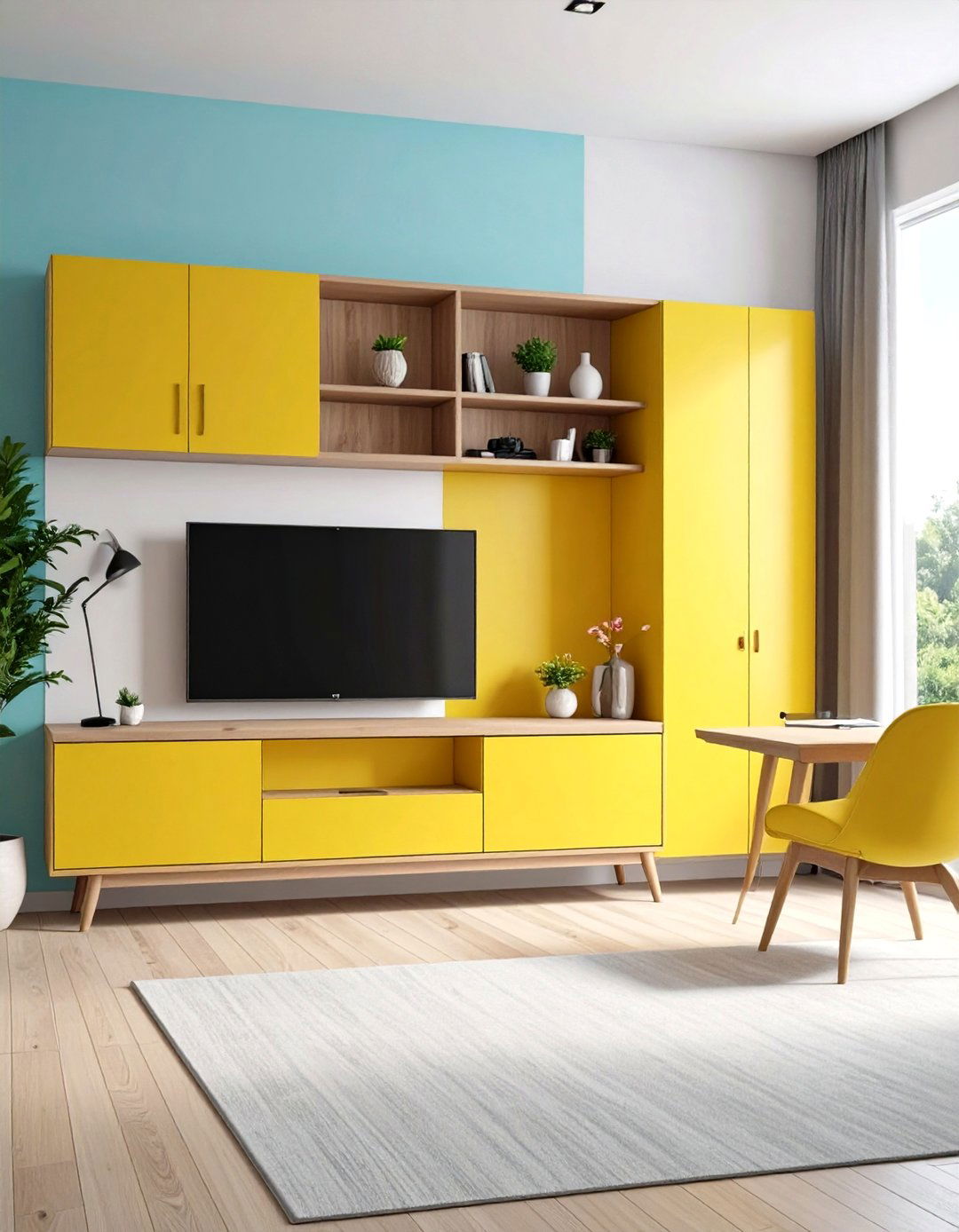
In micro-living scenarios, combine a TV console with a fold-out desk. When closed, it appears as a sleek media stand; when open, it provides a work surface. The TV sits atop or inside the console, while the desk panel folds out from beneath. Integrated cable management channels hide wires during both TV time and work time. This configuration is especially useful for home offices doubling as living rooms, optimizing every square foot for entertainment and productivity.
9. Under-TV Storage Bench
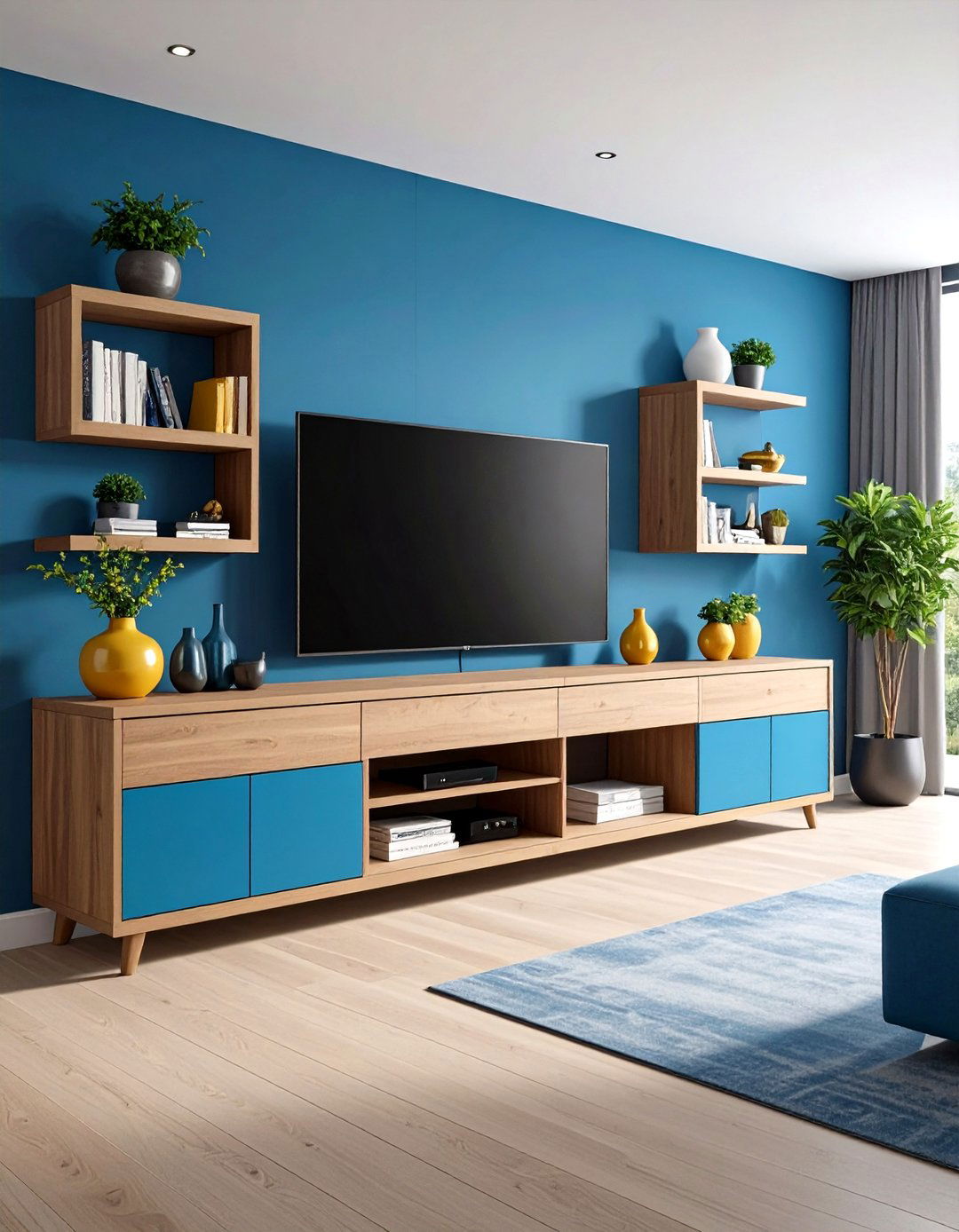
A storage bench placed under your mounted or framed TV offers seating, hidden storage, and a media stand in one. The bench can open to house blankets, board games, or electronics, and its low profile keeps sightlines clean. Use cushions that complement your décor for extra comfort—bench seating also provides additional guest spots in compact layouts. Position the bench directly below a wall-mounted TV to anchor the setup while keeping the room airy and uncluttered.
10. TV within a Bookcase
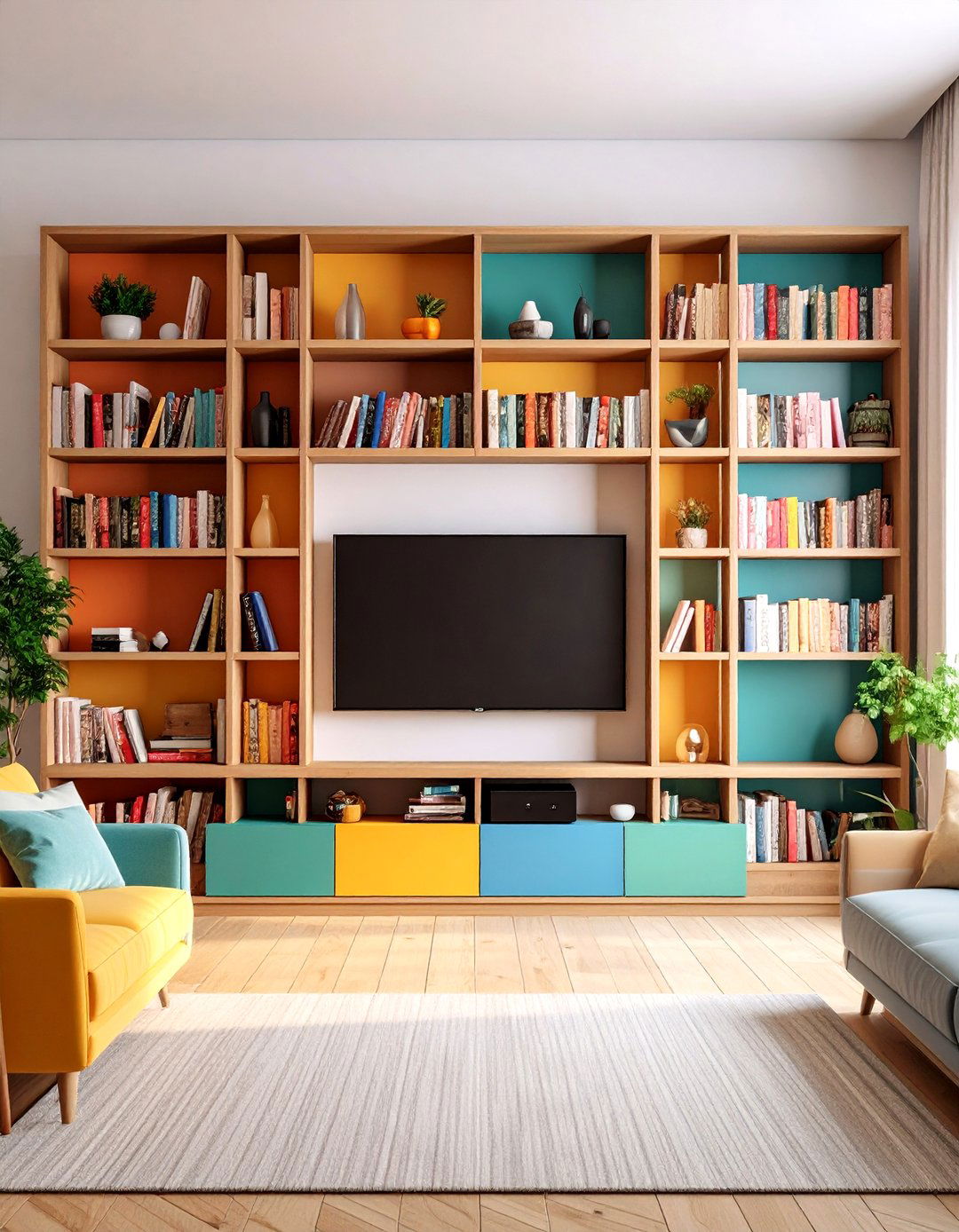
Integrate your TV into a standard or custom bookcase by removing a central shelf to accommodate the screen. Surrounding shelves display books and décor, turning the media area into a curated gallery wall. Use matching bins or baskets on lower shelves to conceal cables and accessories. This tactic blends entertainment with library vibes, making the TV part of a larger design statement rather than a standalone tech piece.
11. Slim Media Console with Hairpin Legs
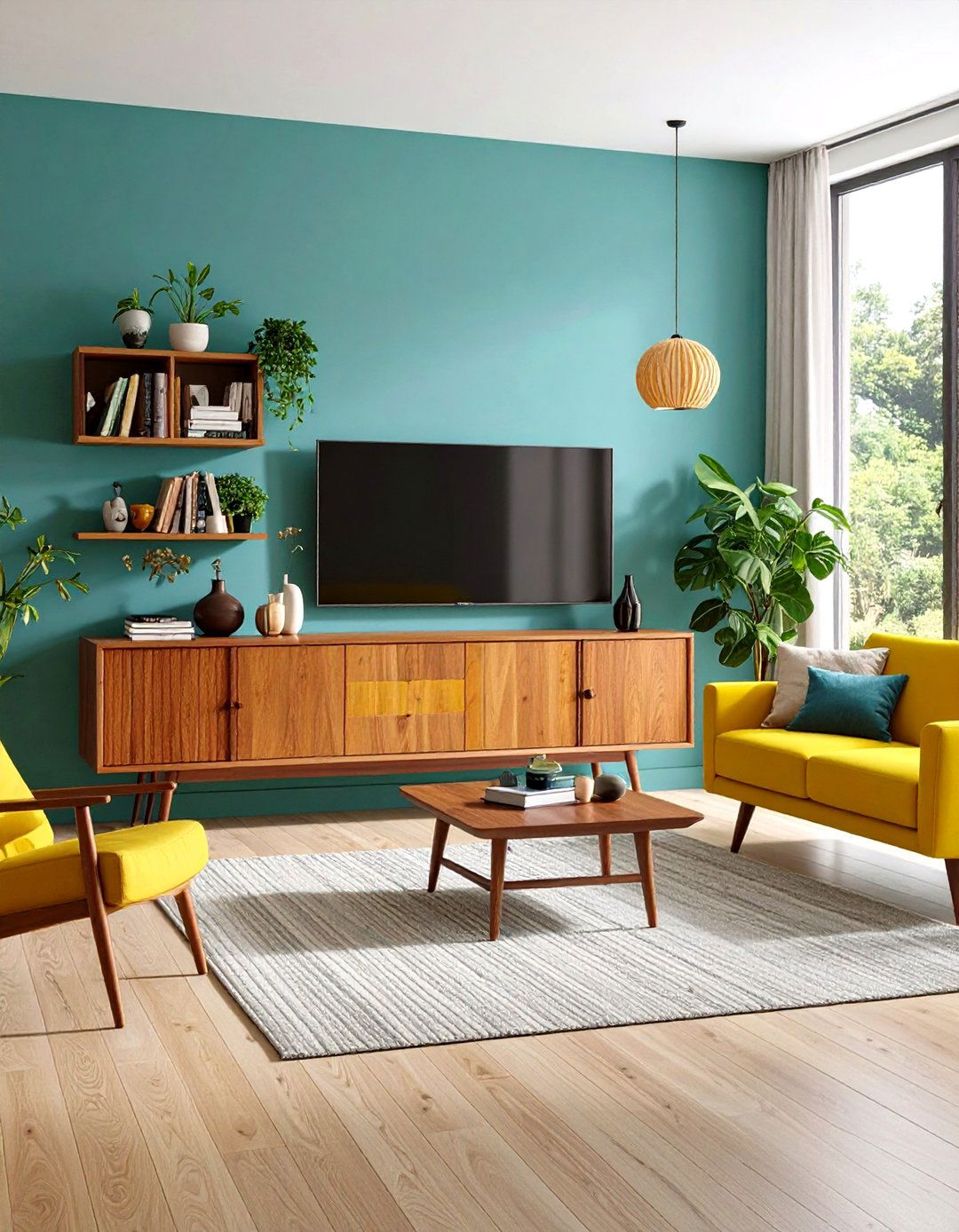
A slim media console on hairpin legs provides a mid-century modern touch while keeping the space grounded. The elevated design allows visible floor area beneath, making the room feel larger. Look for consoles with a mix of open shelves and drawers to balance display and storage. Pair the lean console with a small area rug and low-profile seating to enhance the retro minimalist look without overwhelming a small footprint.
12. Recessed TV Nook
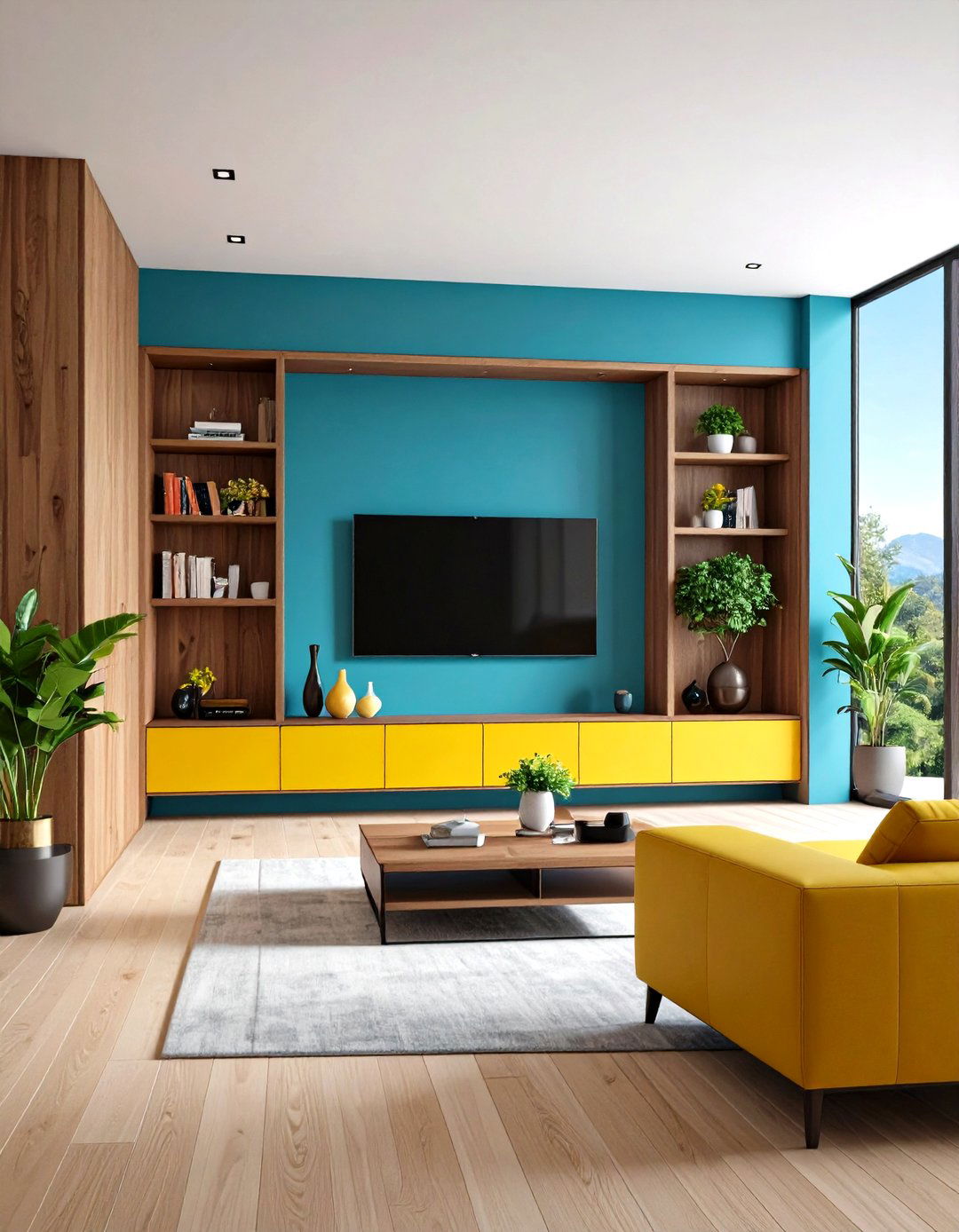
If your wall cavity allows, create a recessed nook for your TV that sits flush with surrounding walls. Frame the nook with molding or contrasting paint to highlight the screen as a focal point. Beneath the alcove, install floating drawers or cabinets for media storage. This built-in approach avoids any protruding furniture and integrates the TV into the architecture, making the room appear deeper and more streamlined.
13. TV on a Rolling Cart
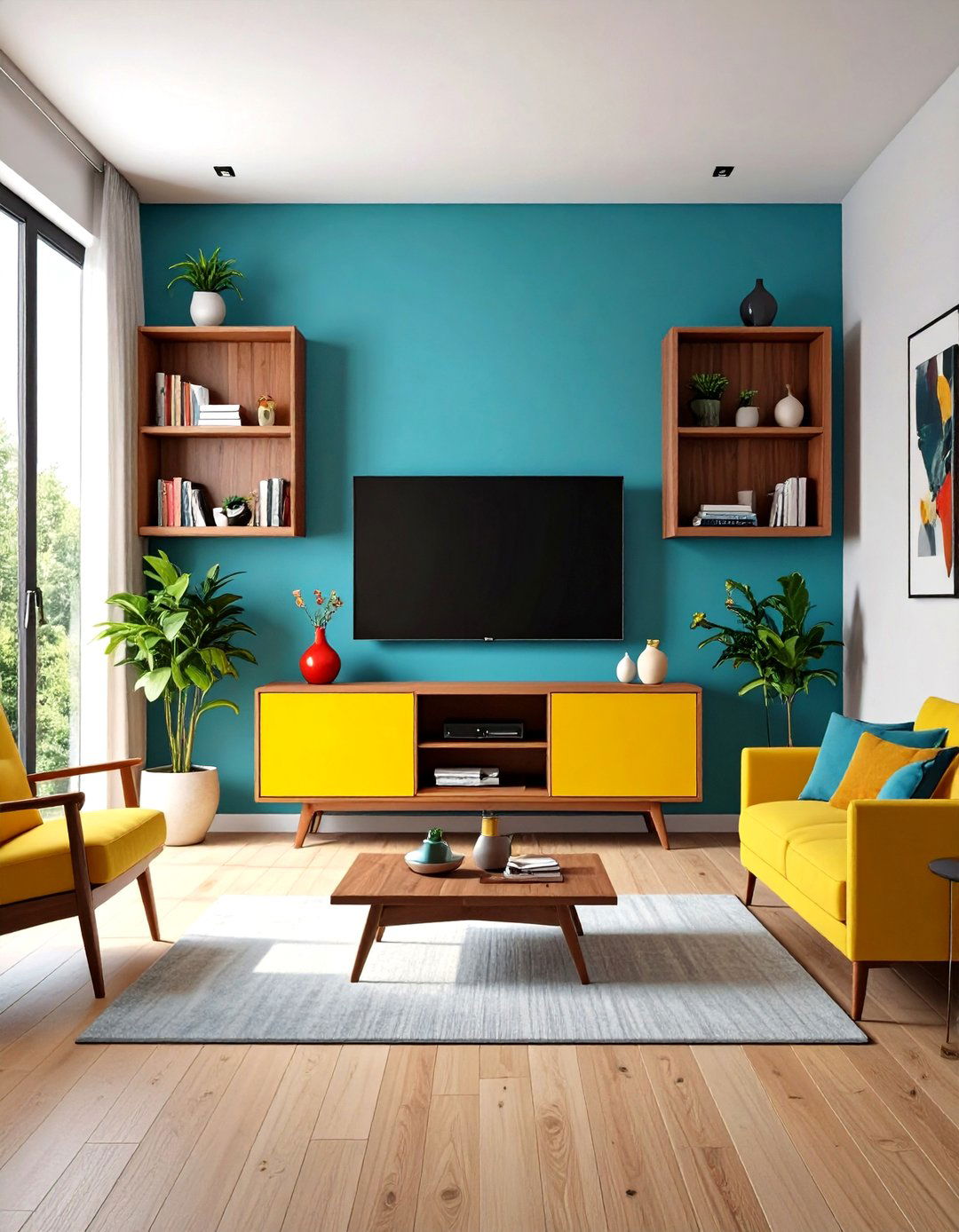
A rolling media cart brings flexibility to tiny living rooms, letting you pivot the TV anywhere—from corner to center—depending on seating or light conditions. Choose a cart with multiple tiers for consoles, speakers, and decor. Lockable wheels ensure stability when in use, and its mobility makes cleaning and rearranging effortless. This is an ideal solution for renters or anyone who enjoys frequently updating their layout.
14. TV as Part of a Gallery Wall
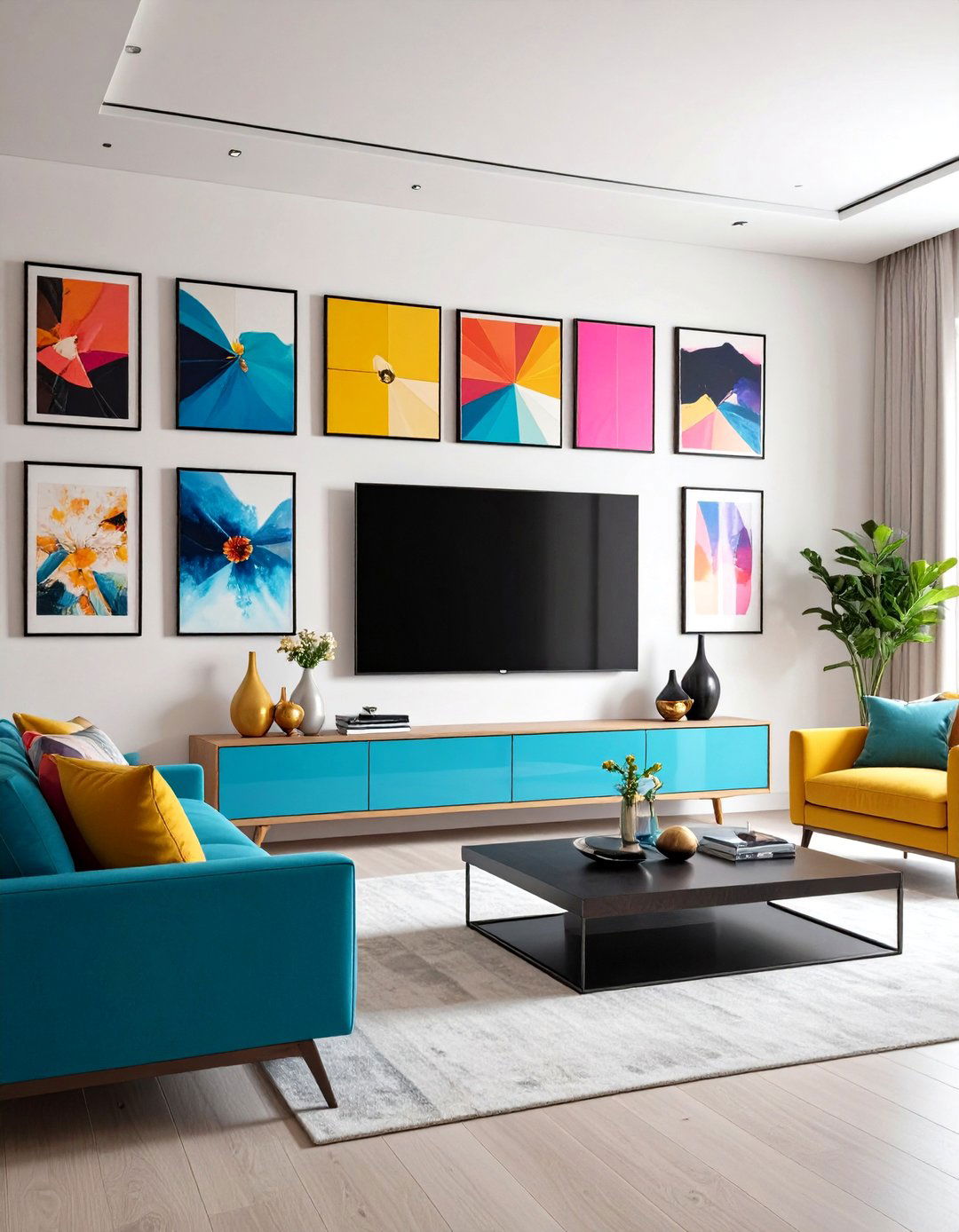
Incorporate the turned-off TV screen into a gallery wall by surrounding it with framed art, photographs, or mirrors. Use matching frames and matting for cohesion. When off, the black screen appears as one “art” piece among many, blending into the arrangement. Mount the TV with a low-profile bracket to keep it flush, and ensure design symmetry for a polished, curated look that distracts from the TV’s tech aesthetic.
15. TV above a Low-Profile Fireplace
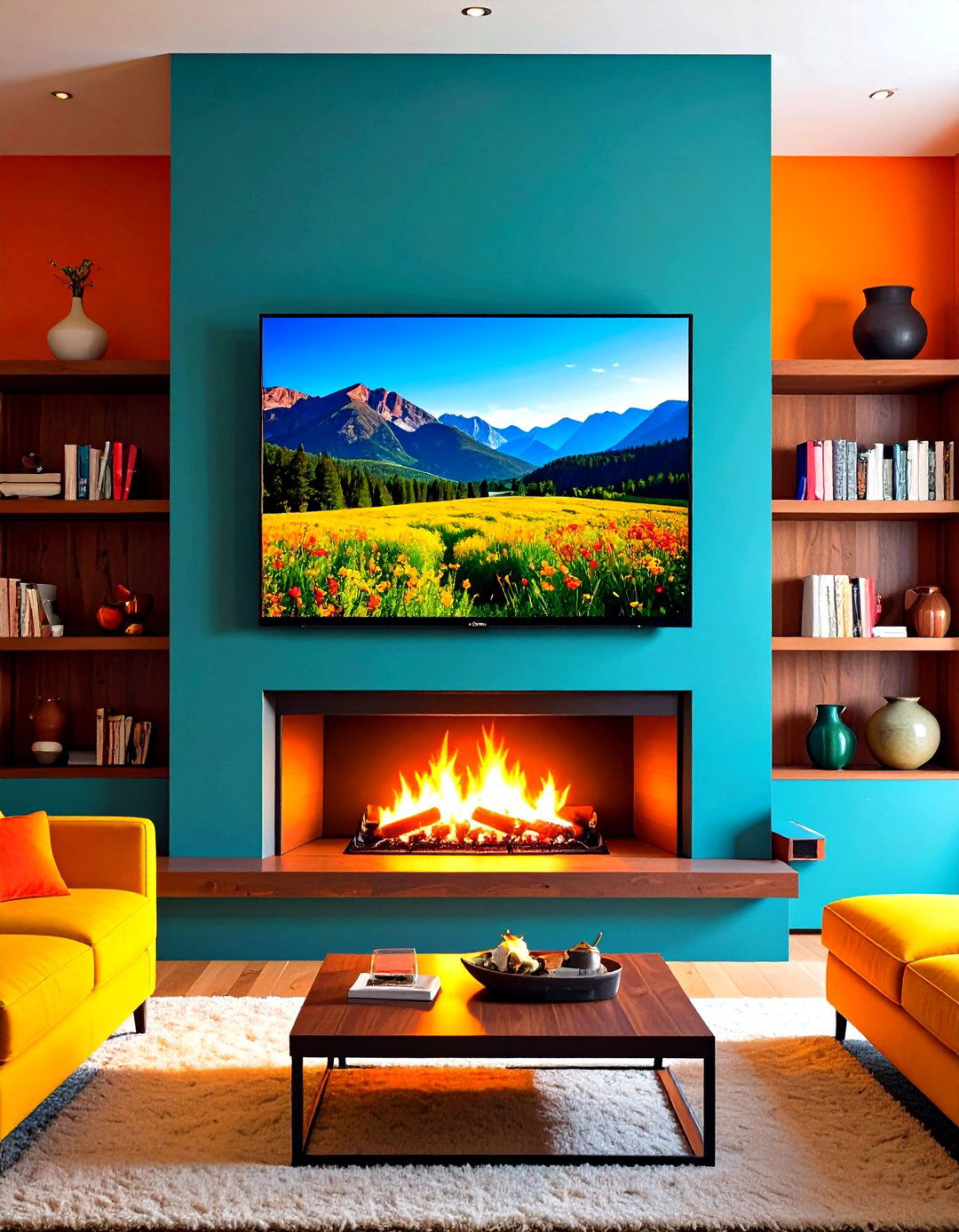
Stacking the TV above a streamlined electric or gas fireplace immediately establishes a dual focal point without extra furniture. A low-profile mantel can house remotes and décor, while the warmth of the fireplace draws eyes down, balancing the screen. Ensure proper mounting height—ideally 4–6 inches above the mantel—to maintain comfortable viewing angles and protect the TV from heat.
16. TV in a Mirror Cabinet
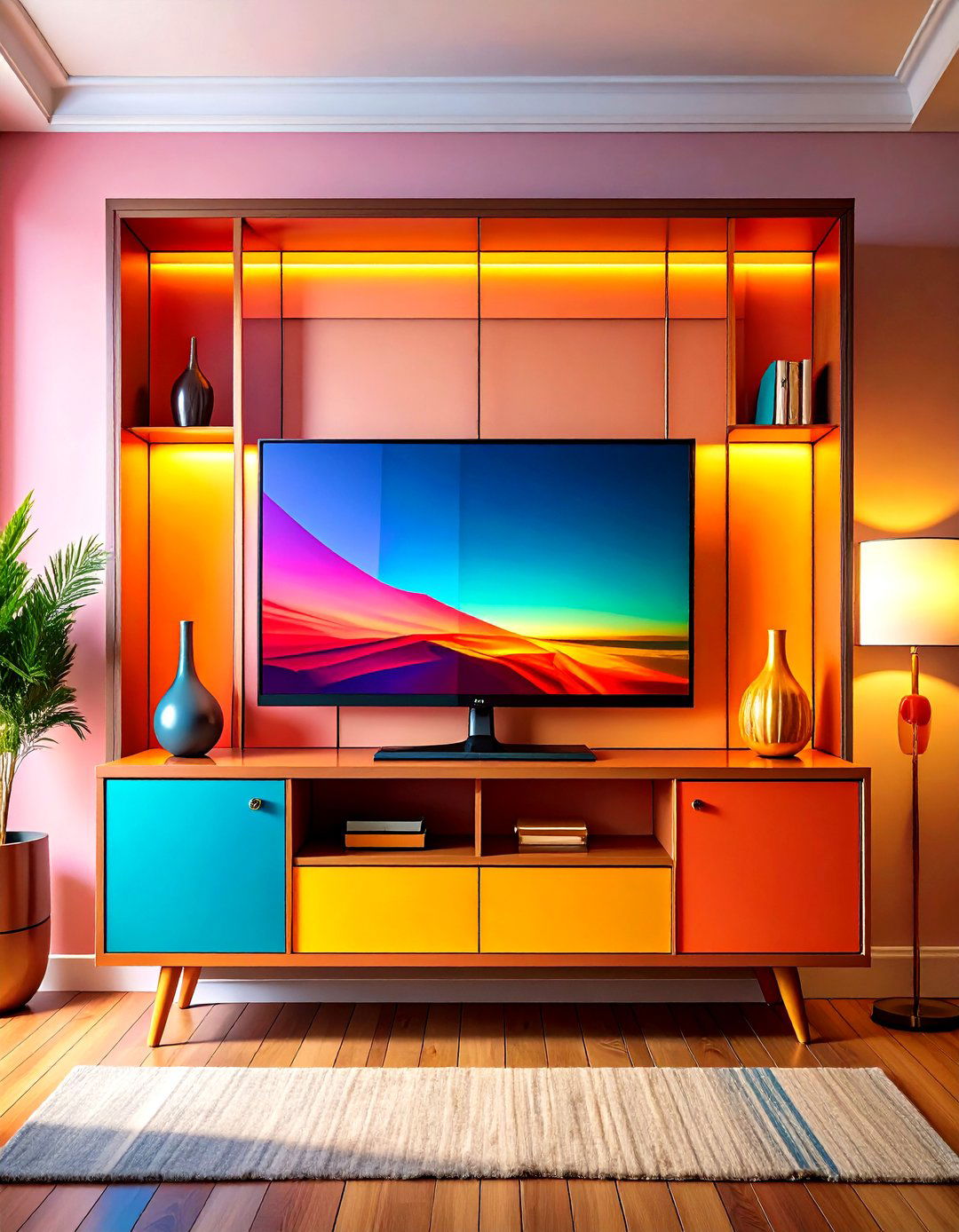
A mirror-front TV cabinet hides the screen behind reflective panels when it’s off, doubling as a decorative mirror. On command, the panels slide or fold away to reveal the TV. This opulent solution blends tech concealment with luxe finishes, perfect for minimalist or glam interiors. It keeps the living room bright by reflecting light when the TV is hidden, and turns media time into a sleek reveal.
17. TV with Decorative Panels
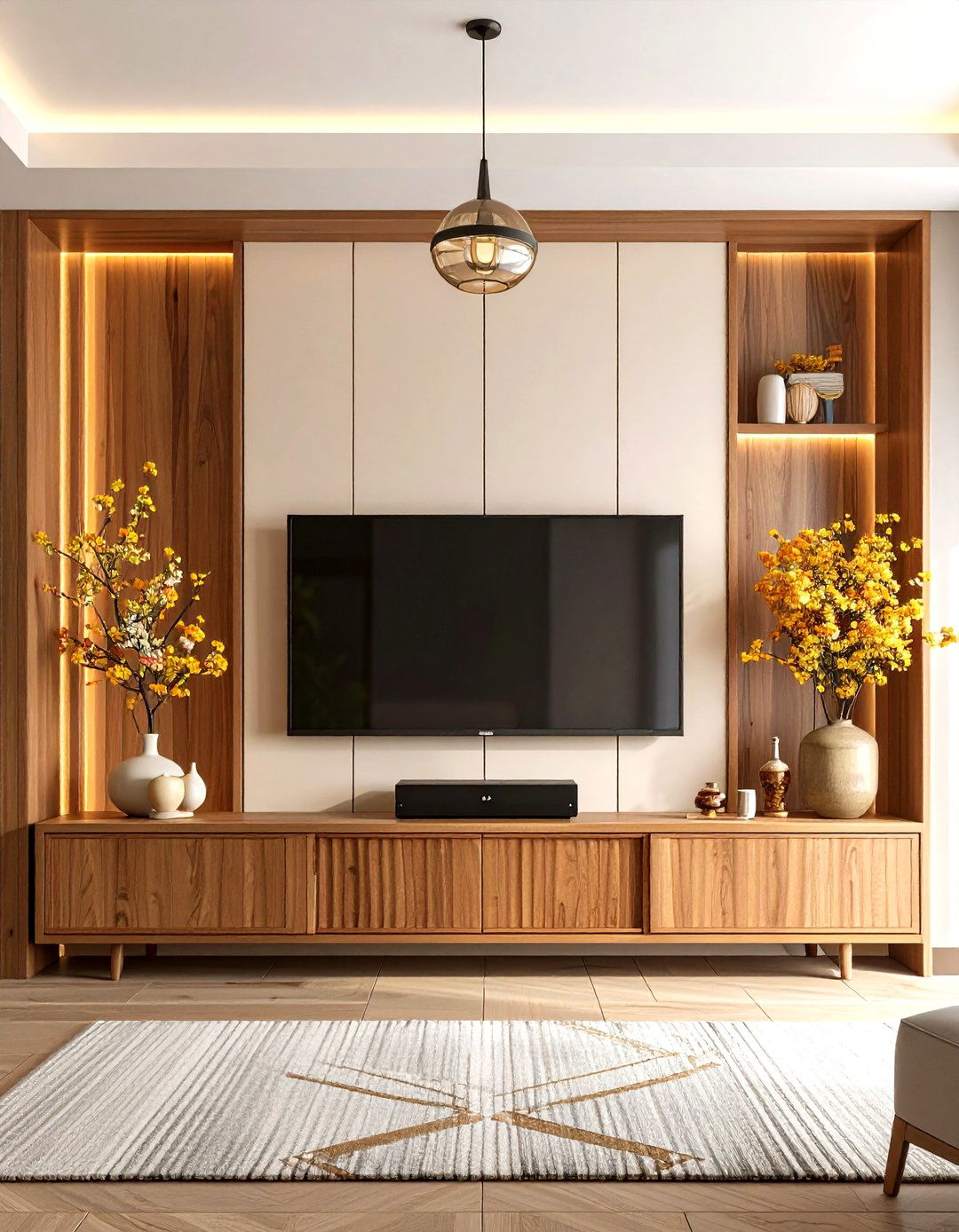
Frame your television with sliding or folding decorative panels—such as louvered shutters, shoji screens, or carved wood panels—that close to conceal the screen. When open, the panels add texture and style; when closed, they hide the TV entirely. This approach works brilliantly in transitional interiors, marrying functionality with artisanal detailing and allowing the room’s décor to shine uninterrupted.
18. TV behind Sliding Doors
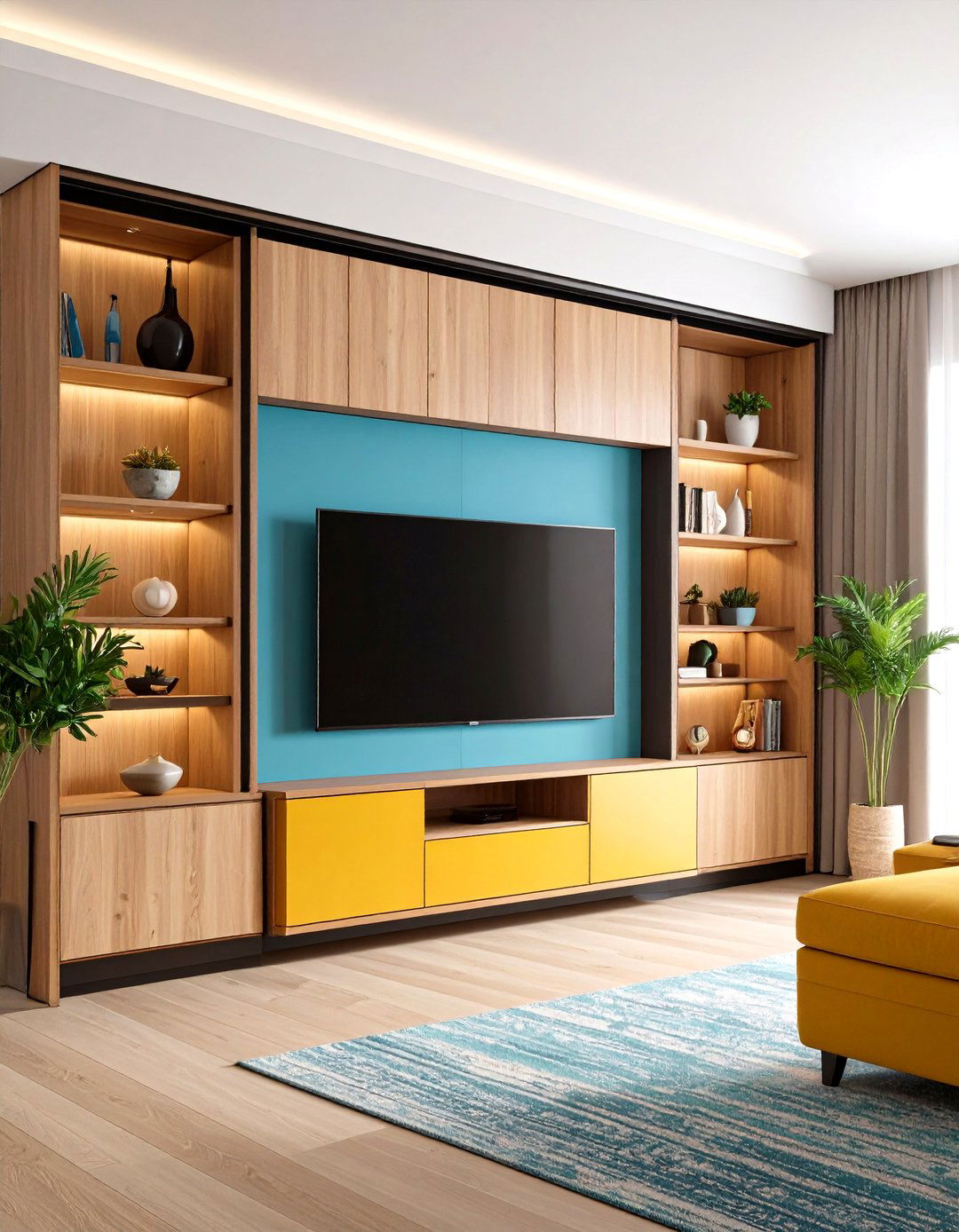
Install barn-style sliding doors on a track in front of a media wall. When doors slide open, the TV is revealed; when closed, they cover the screen and can display their own decorative finish. Choose frosted glass, reclaimed wood, or painted panels to complement your style. This solution fits small rooms by eliminating swinging doors and maximizing wall usage.
19. TV Integrated into a Murphy Bed Unit
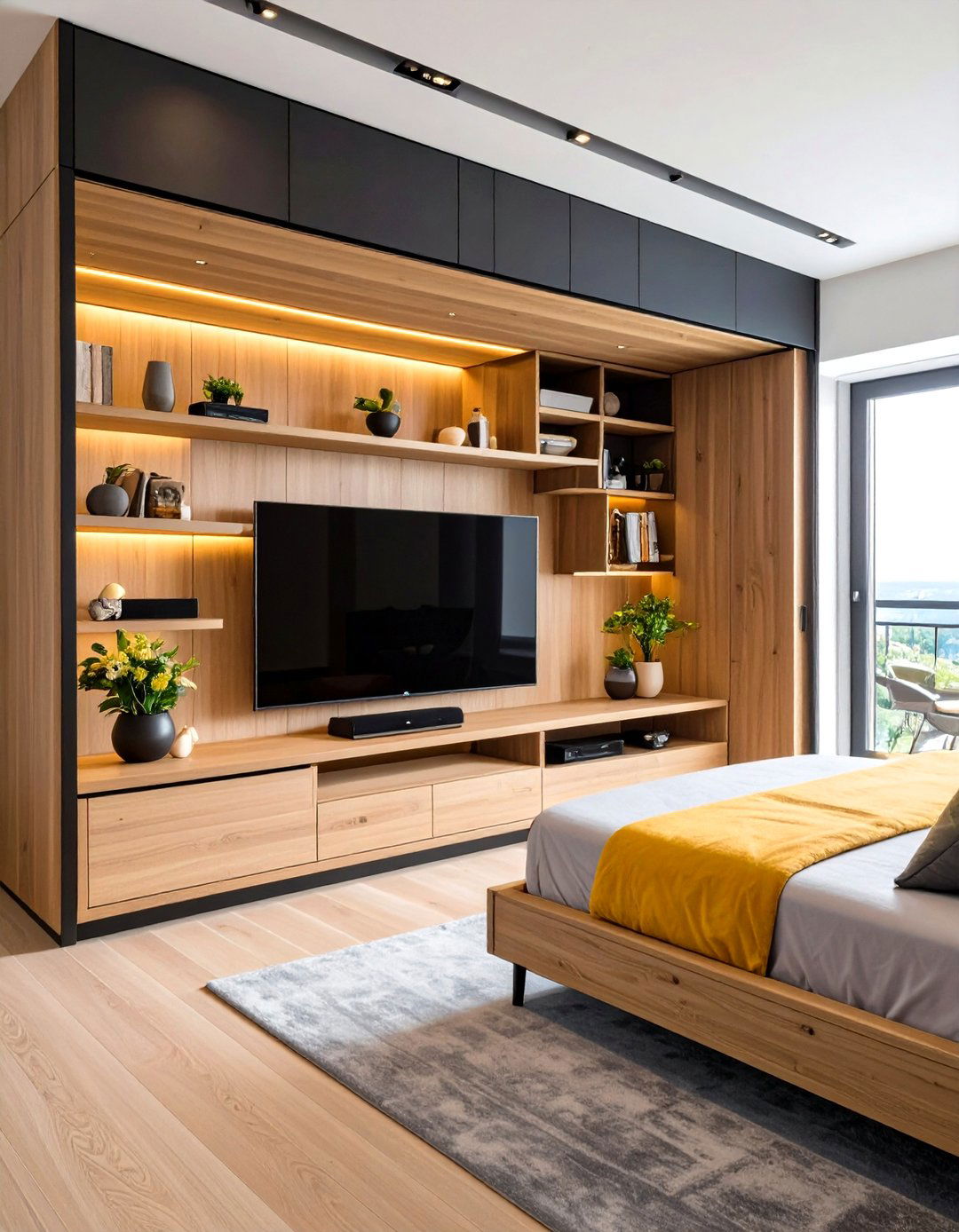
In studio apartments, combine your TV with a Murphy bed cabinet—mount the screen on the bed’s interior panel. When you fold the bed up, the TV is at eye level for daytime viewing; at night, you fold the unit down for sleeping. This dual-purpose installation optimizes every square inch and keeps living and sleeping areas distinct yet seamless.
20. TV on a Ceiling Mount

A motorized ceiling mount allows your TV to descend from the ceiling at the push of a button and retract when not in use, freeing all wall and floor space. This high-tech solution is ideal for compact lofts or rooms with unconventional layouts. Pair it with swivel seating or a sectional arranged beneath for theater-style viewing, then raise the TV to restore full clearance.
Conclusion:
These 20 small living room TV ideas demonstrate that limited square footage doesn’t have to limit style or functionality. From wall mounting and built-ins to hidden cabinets and versatile furniture, there’s a solution to suit every aesthetic and floor plan. By thoughtfully integrating your television into the décor—whether through concealment, multi-purpose units, or architectural features—you can maintain a spacious, inviting living area that centers around entertainment without sacrifice. Choose the ideas that resonate with your lifestyle and watch as your compact space transforms into a stylish, tech-savvy retreat.


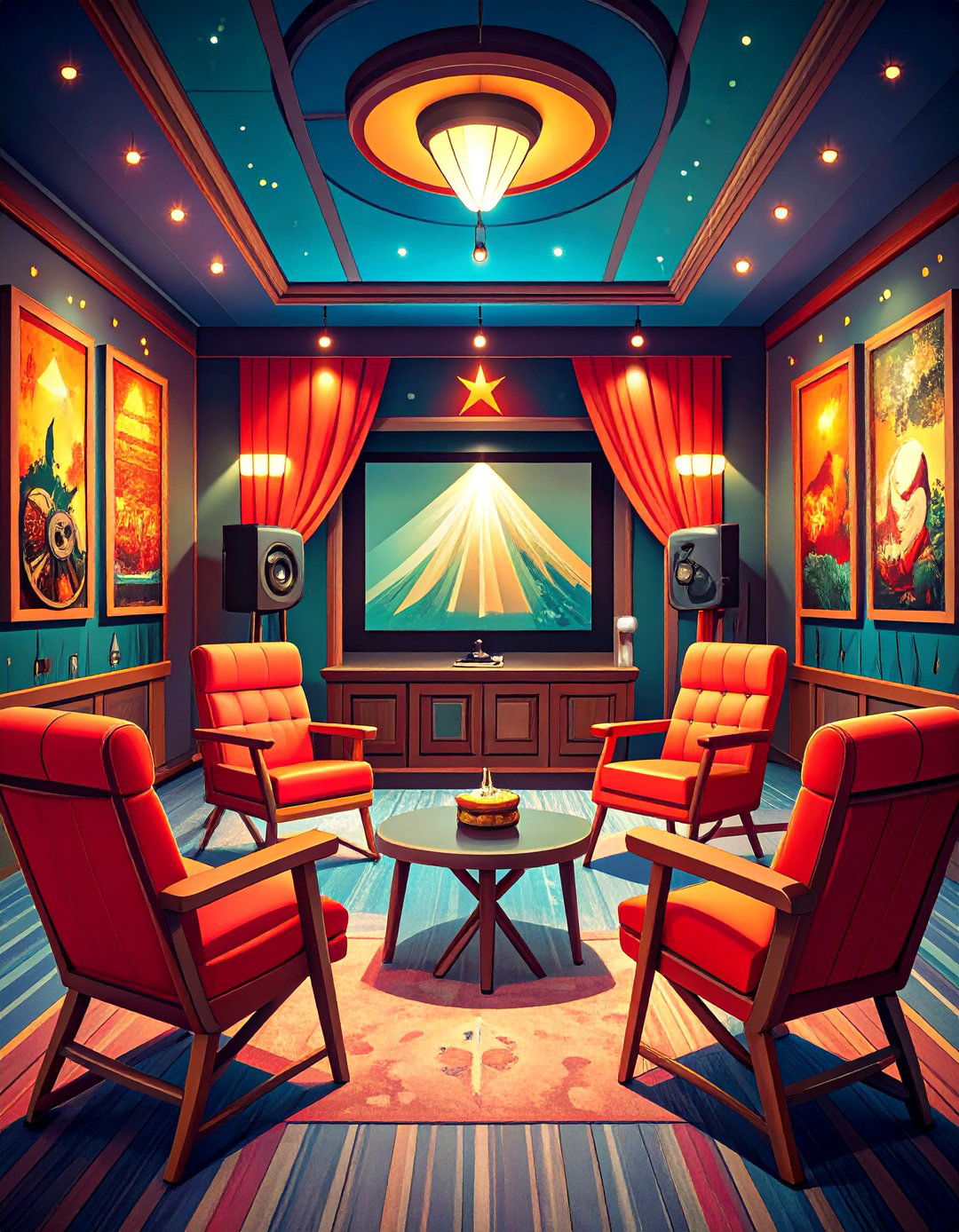

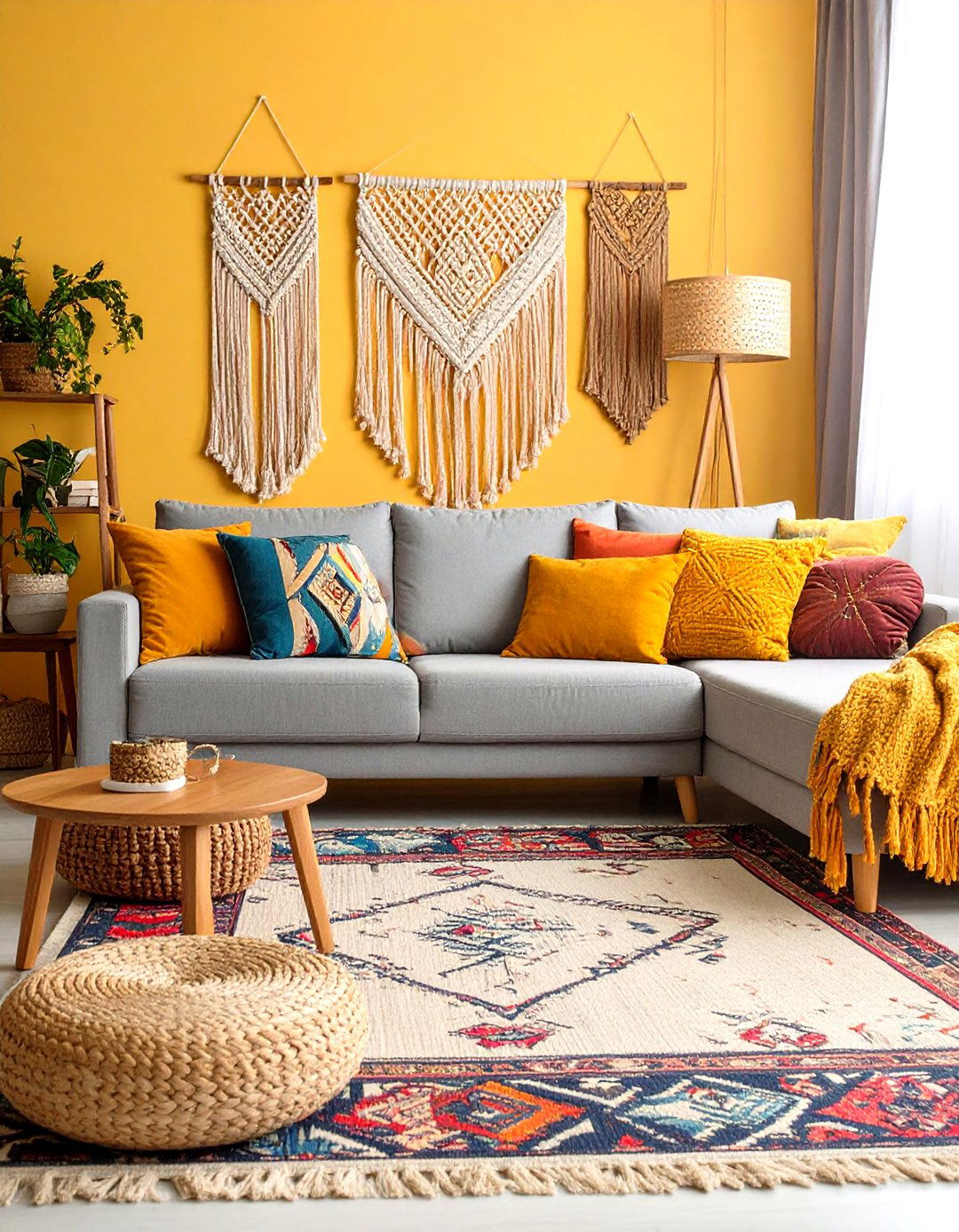
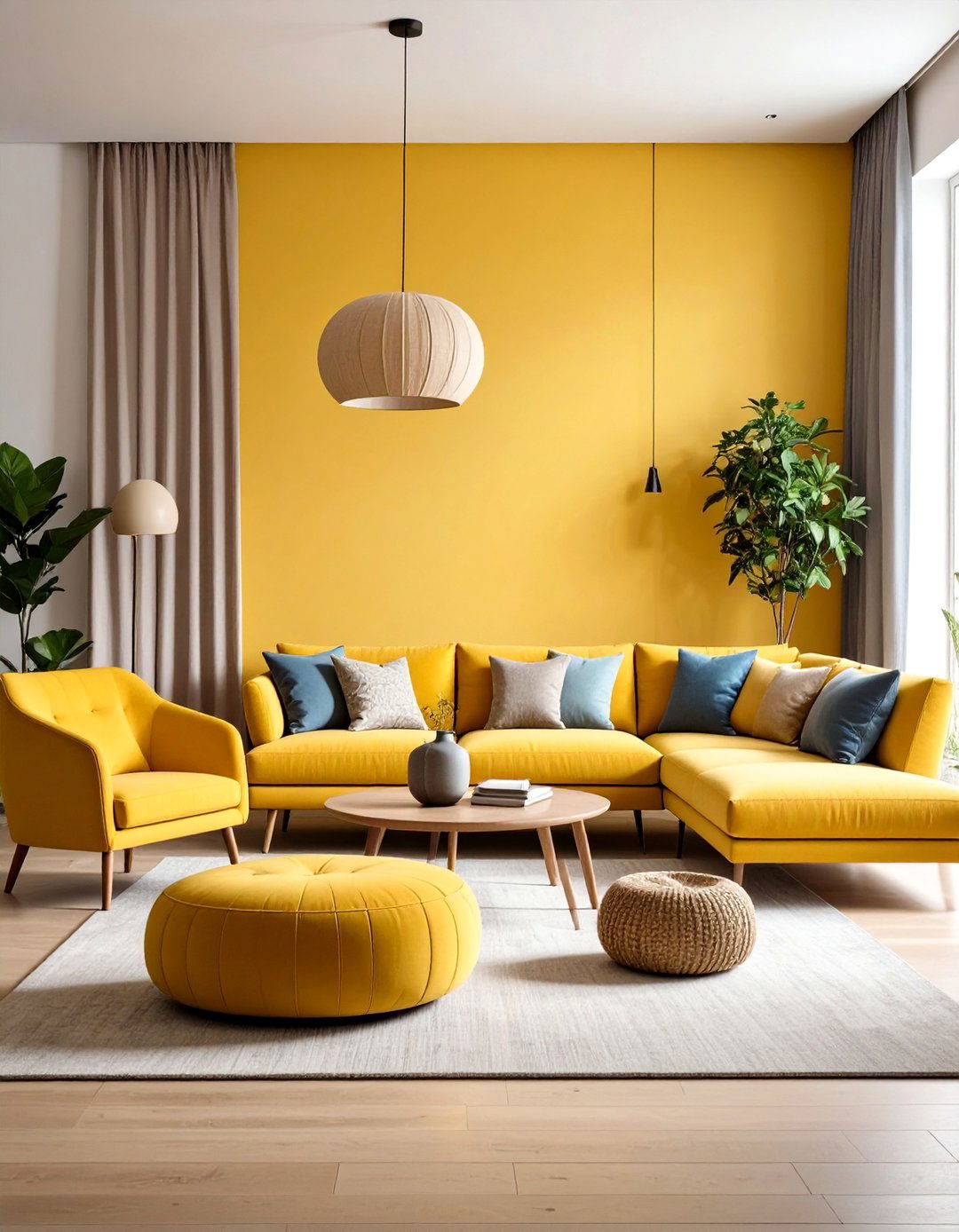

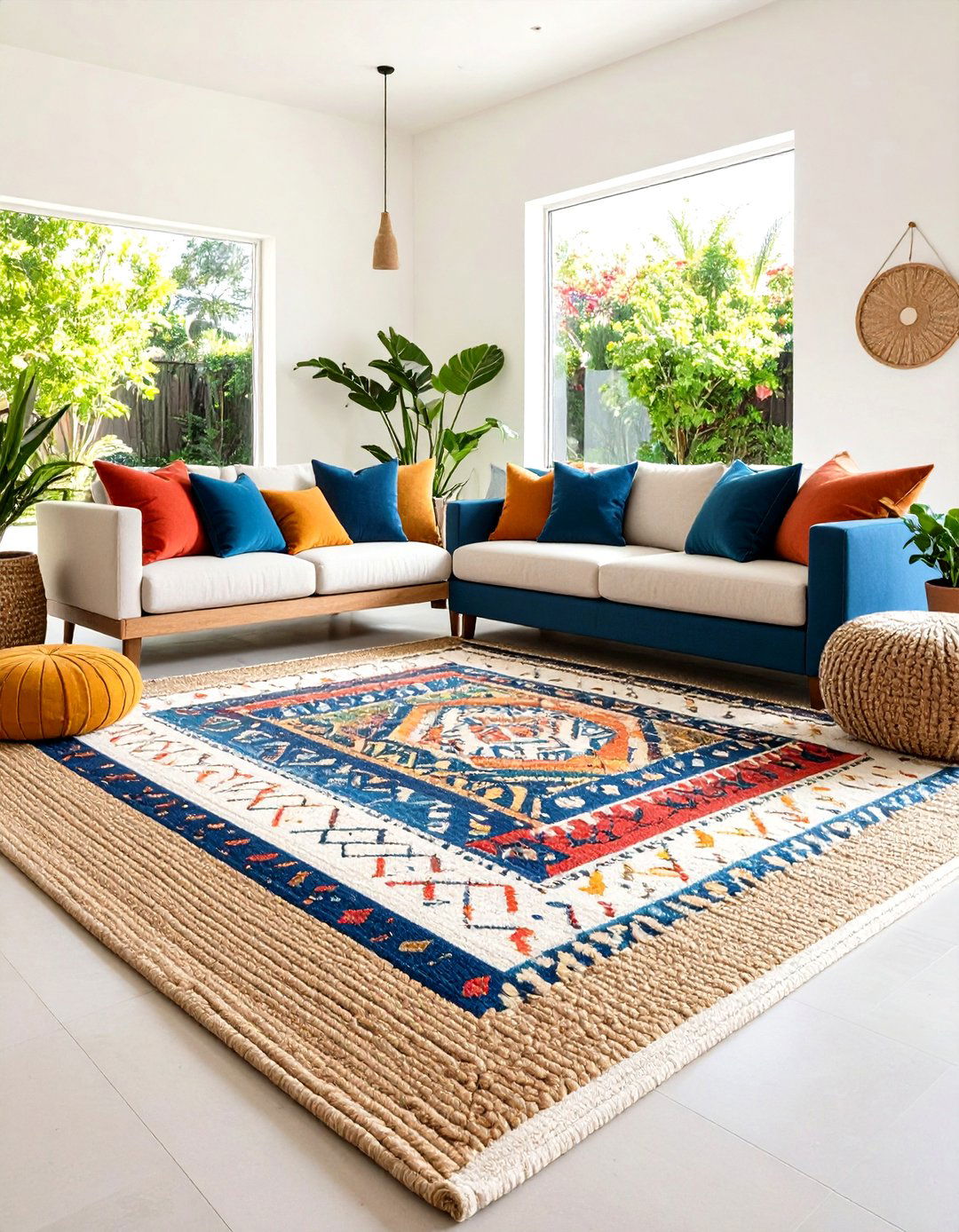

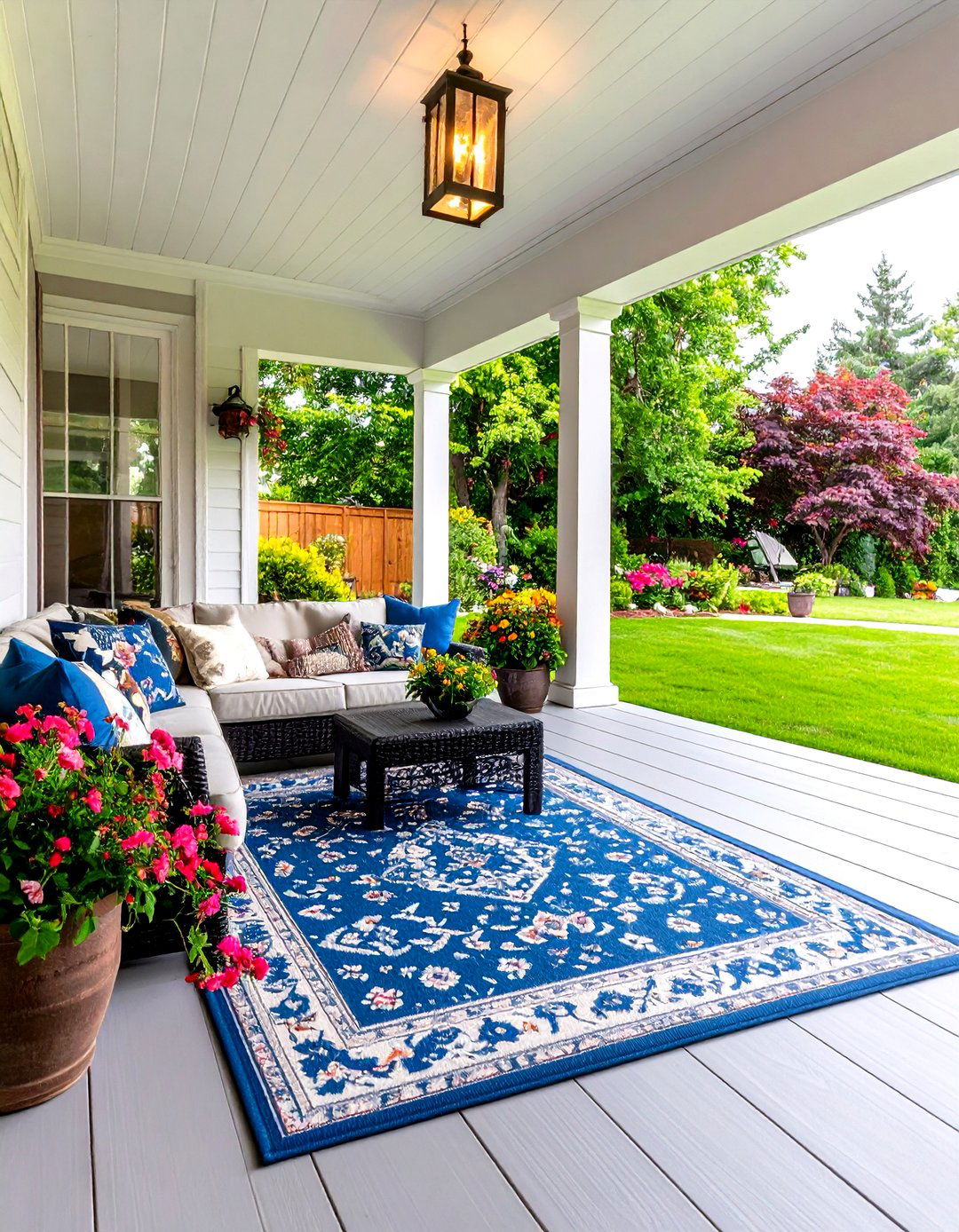
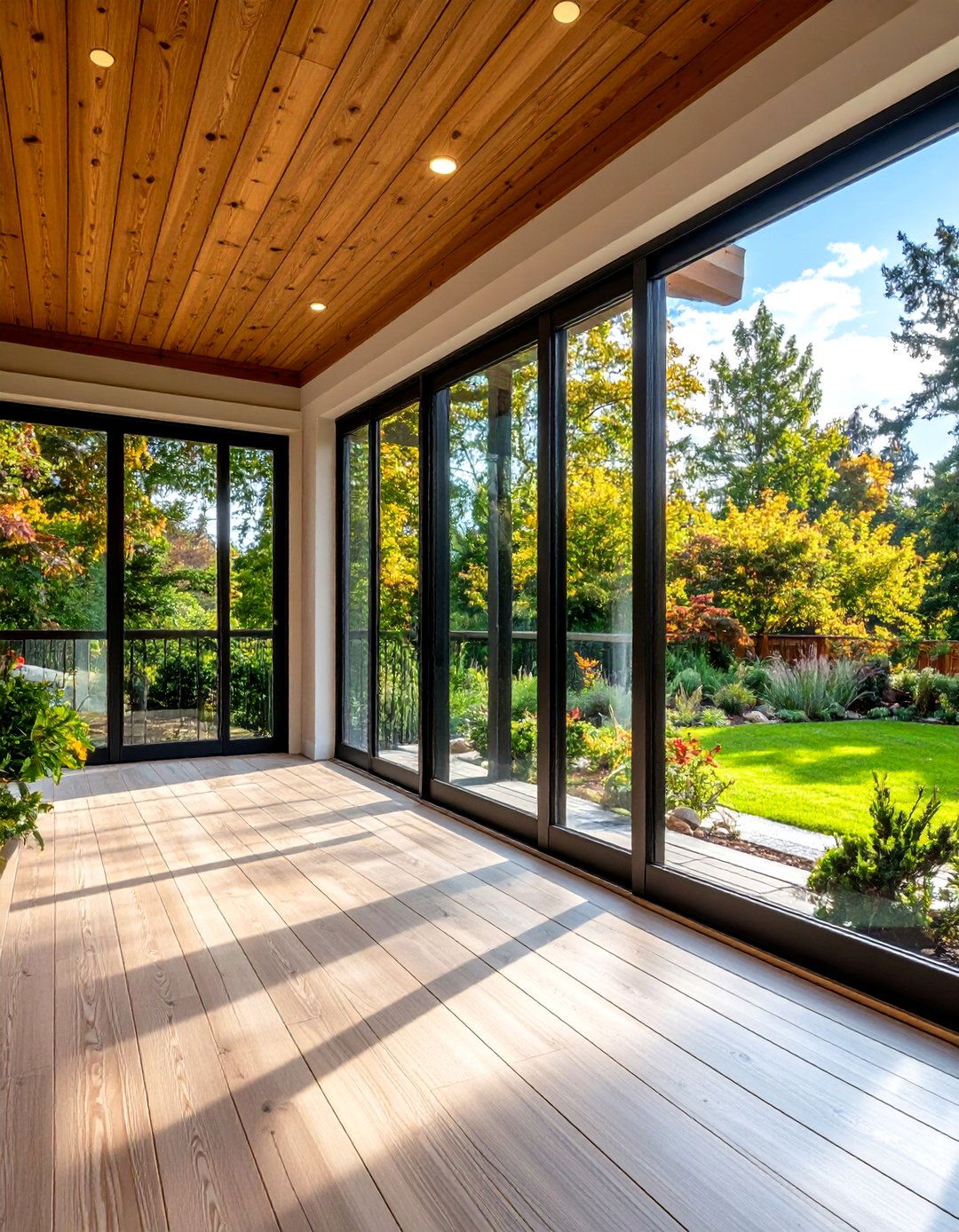
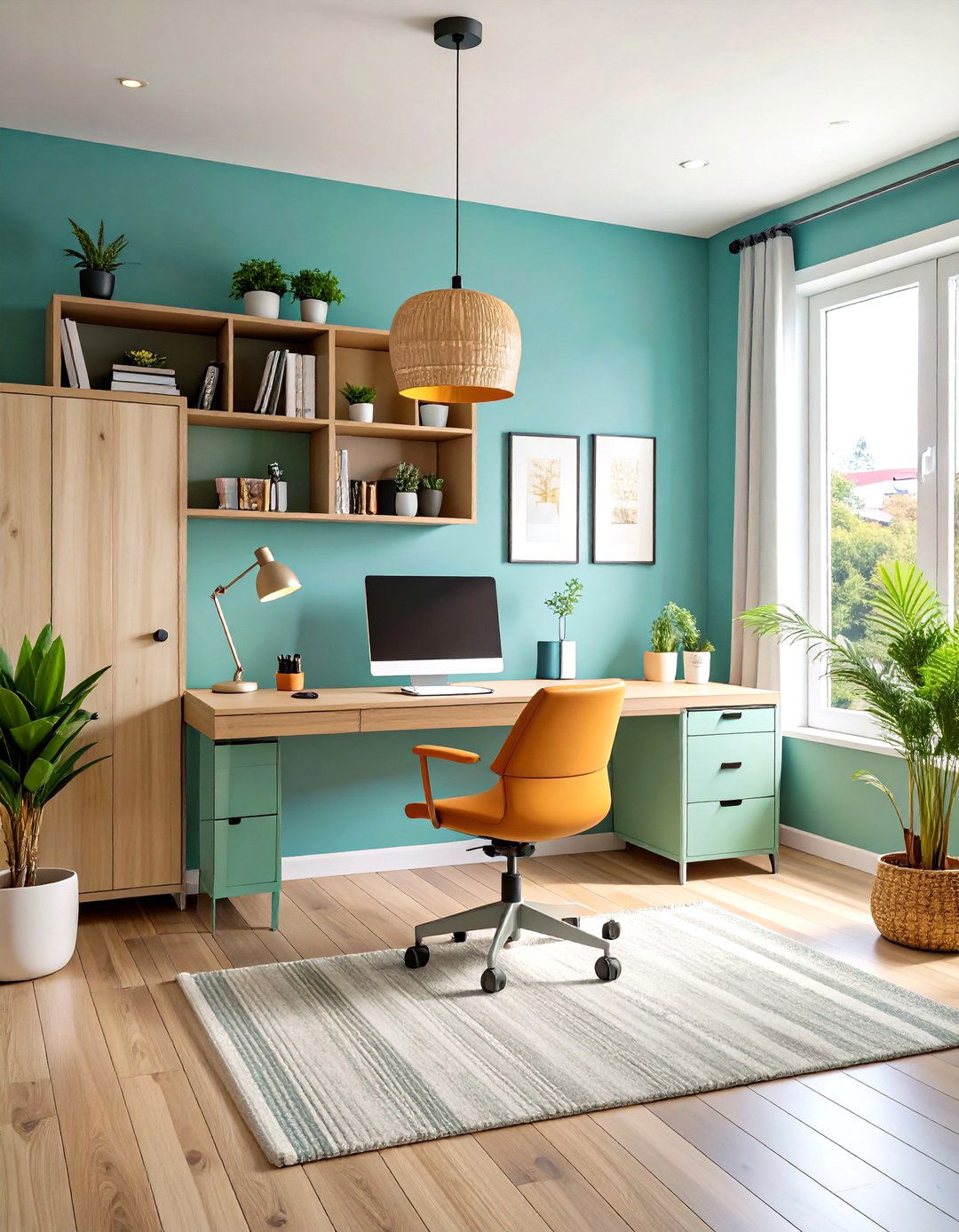
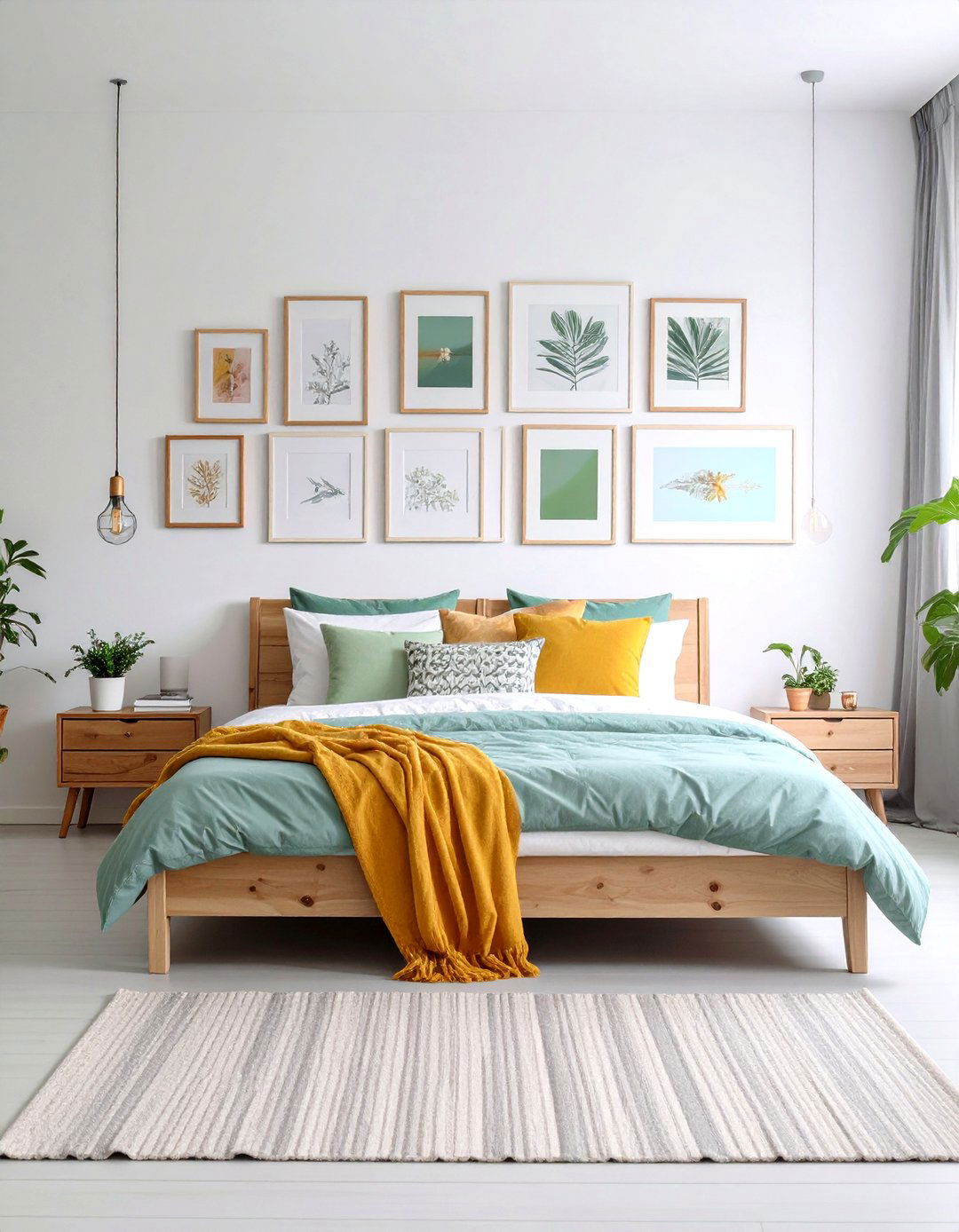
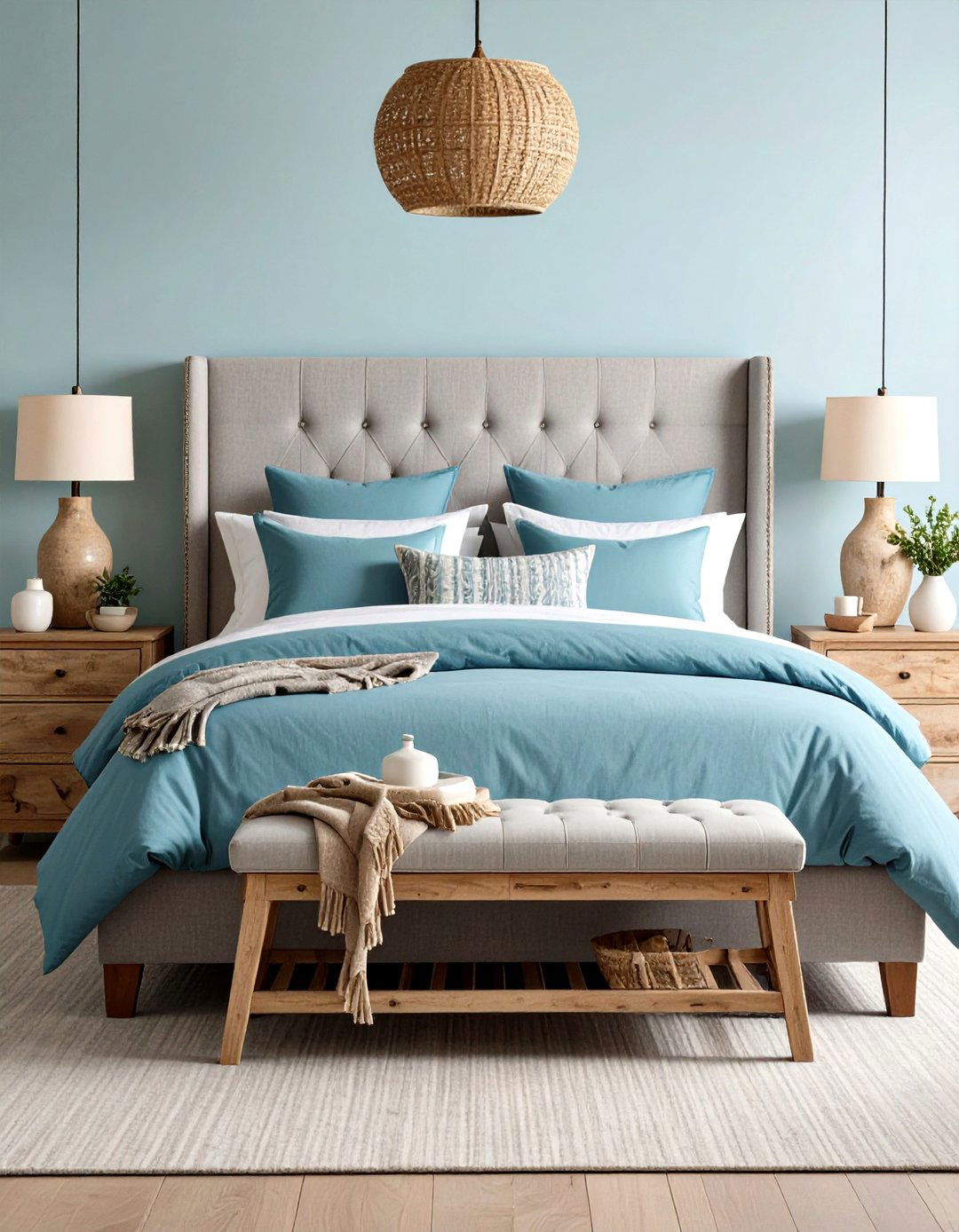
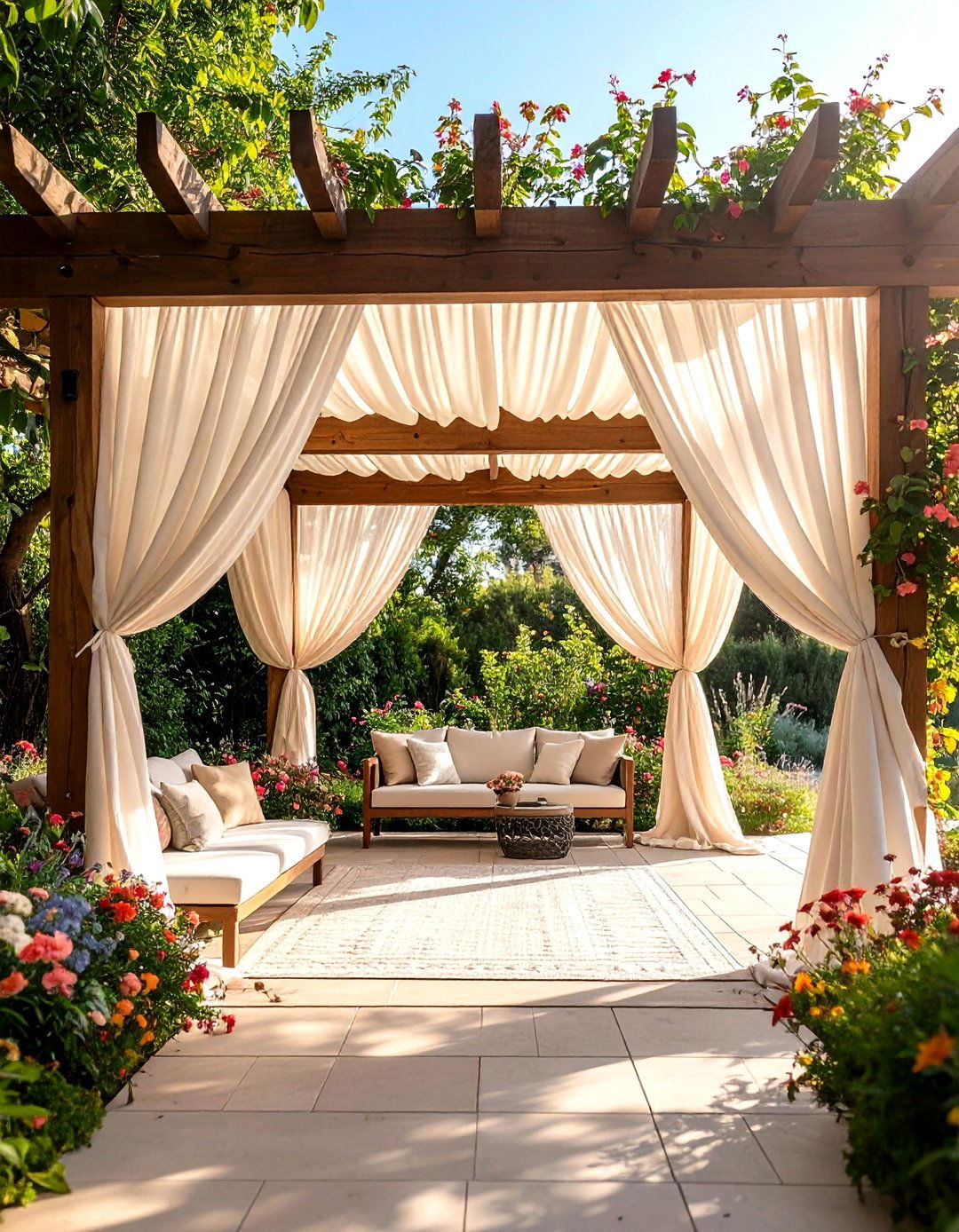
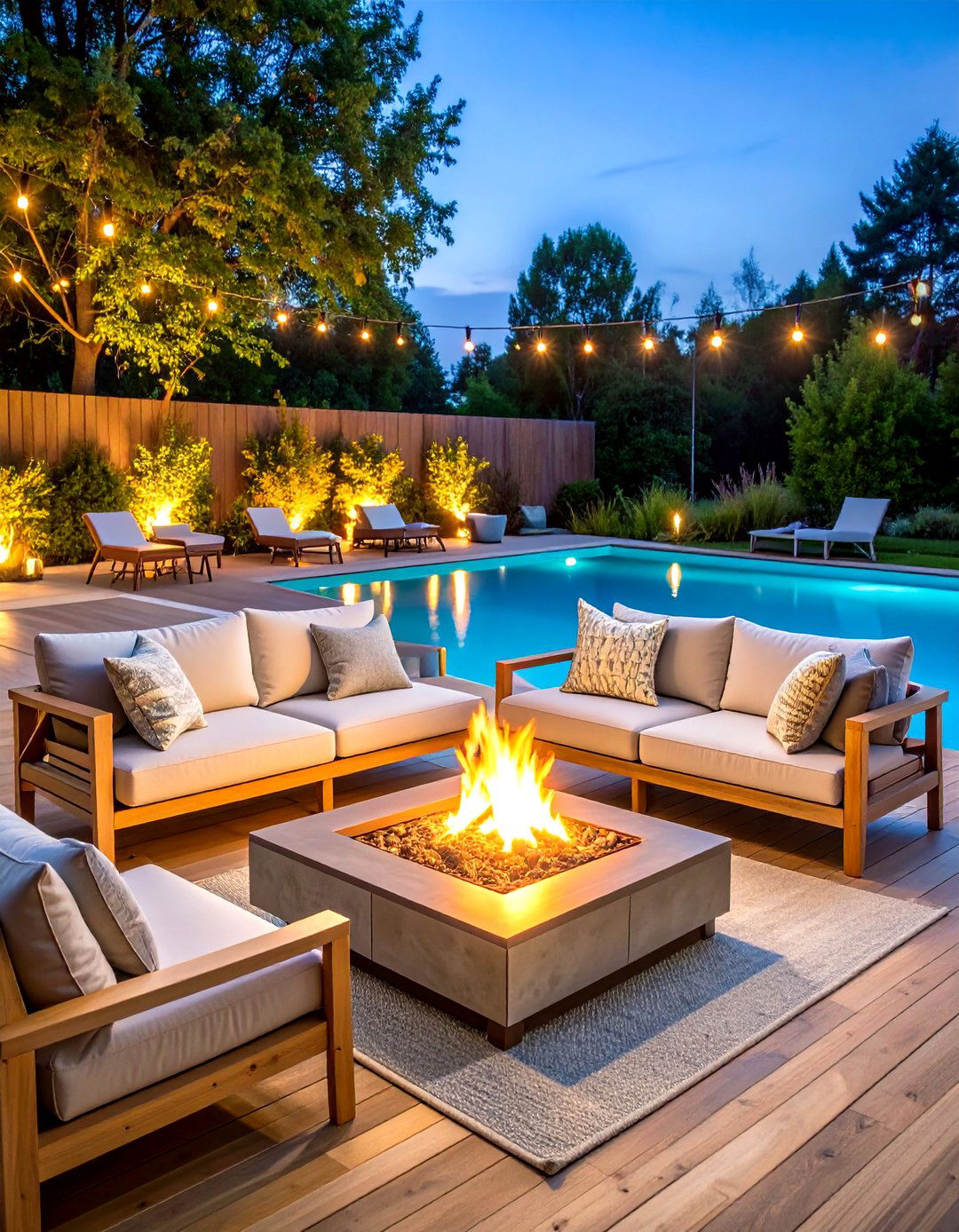
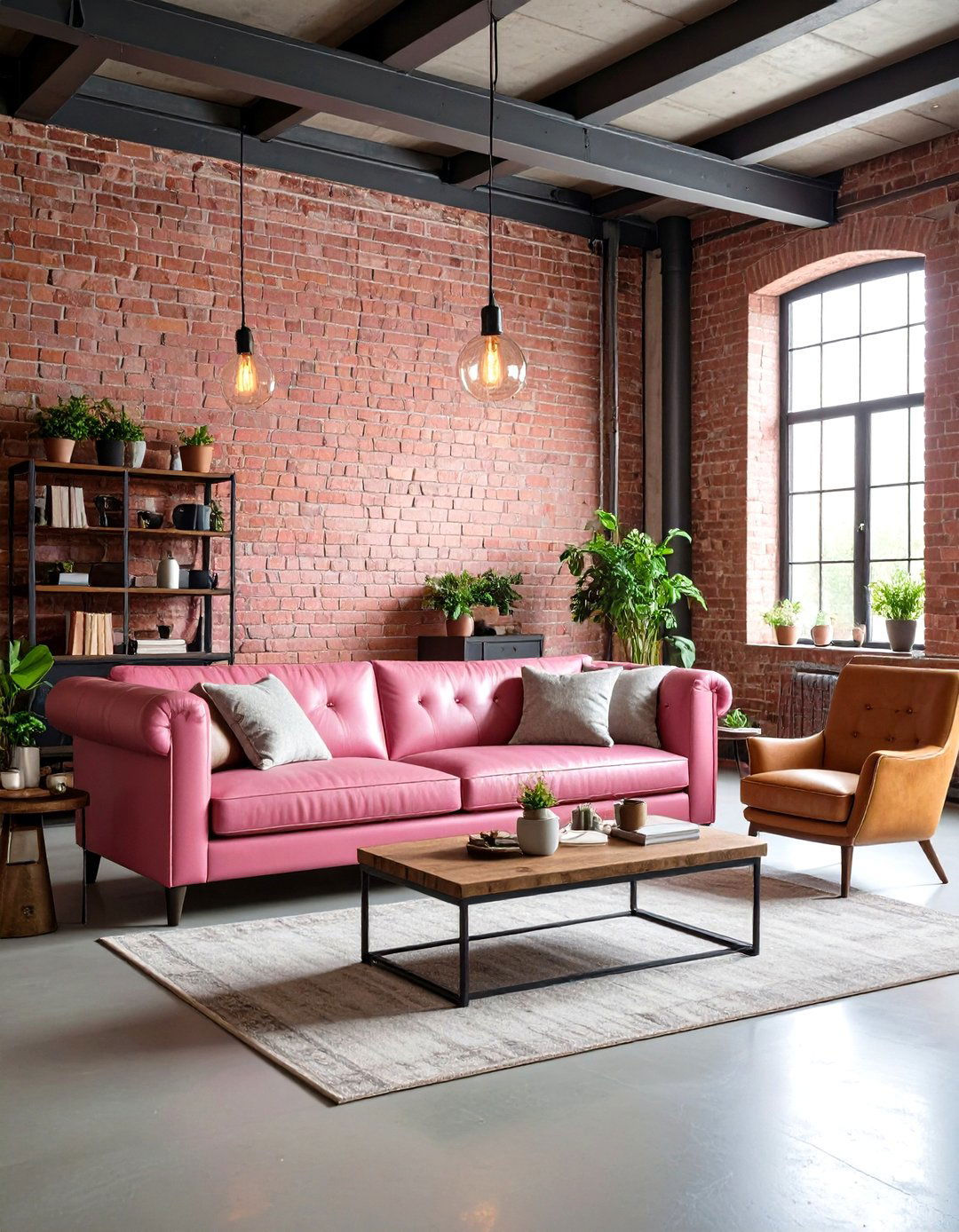
Leave a Reply